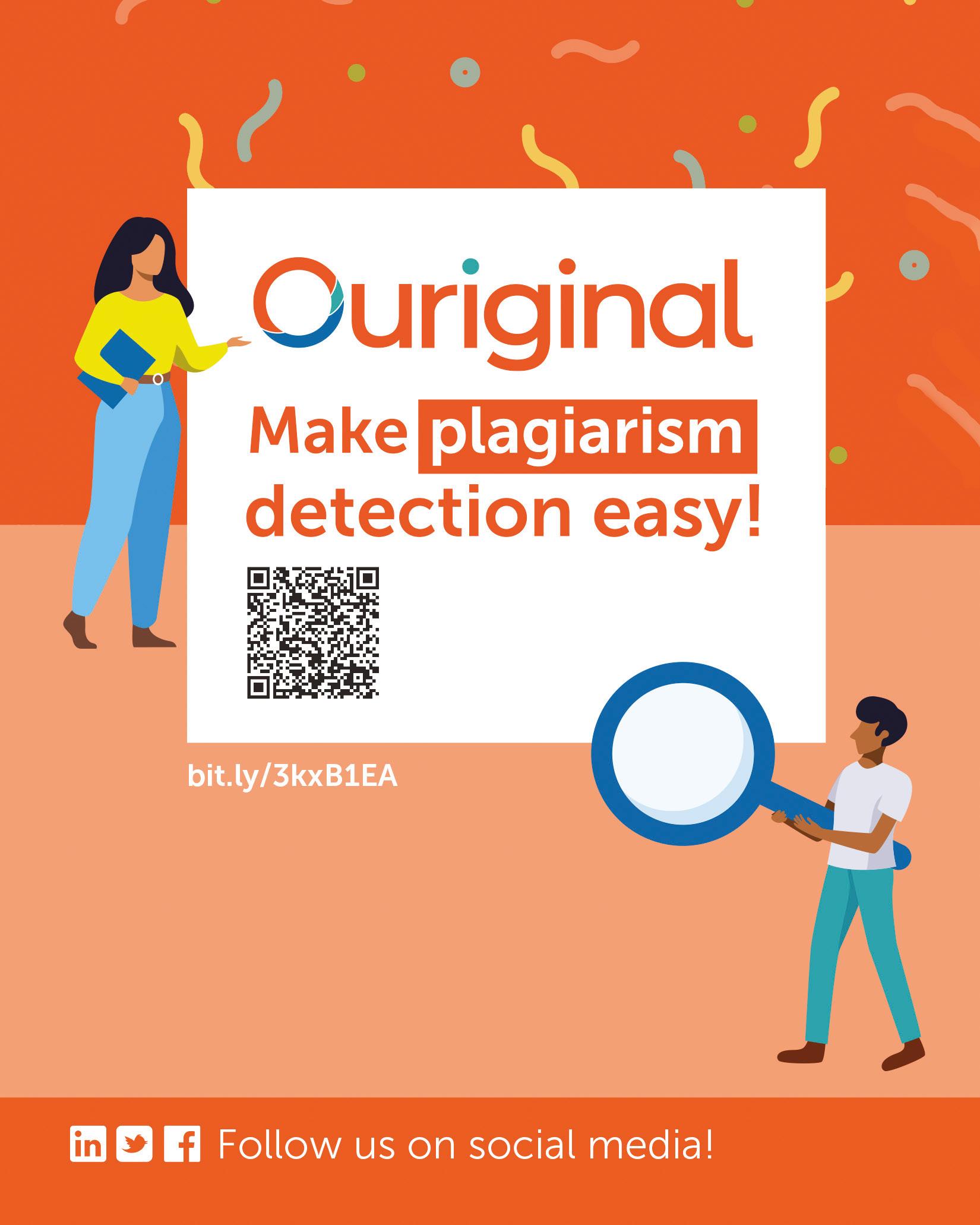








December 2022 Vol - 4 Issue - 18

Head of Advisory Board
Dr. Manoj Varghese, Ph.D
Managing Editor
Sarath Shyam
Consultant Editors
Dr. John Andrews
Anuja Mulmule
Emma James Andrew Scott Amrin Ahmed
Editorial Enquiry: admin@highereducationdigest.com
Creative Consultants



Charlie Jameson Manjunath R Louis Bernard
Naomi Wilson Stanly Lui Roshni Rajagopal Sabrina Samson Keith Alexander Ajay Das Rohith Poojary Shirley David
Branding & Marketing Partnerships


Jennifer Anderson Monica Davis Suchita Sethy Siva Kumar Jessica Edword
Rachel Roy Shubham Amle Anna Elza Stephen Donnell Cathy Che
Partnerships Enquiry: admin@highereducationdigest.com
Free Subscription www.highereducationdigest.com


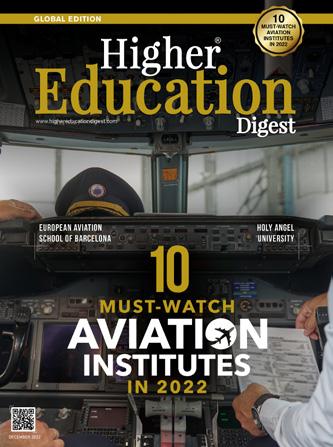


Americas 16192 Coastal Highway, Lewes, DE 19958, USA
Europe 27, Old Gloucester Street, London, WC1N 3AX, UK
Middle East & Africa P.O. Box 48299, Dubai Silicon Oasis, Dubai, UAE
Asia-Pacific
Ramanashree Arcade, 18 MG Road, Bangalore – 560001, India
Higher Education Digest is a digital magazine published by Connecta Innovation Private Limited. All rights reserved. The opinions expressed in the content and pictures provided are those of the authors. They do not purport to reflect the opinions or views of the Connecta Innovation Private Limited or any of its members and we do not assume any responsibility. The publisher does not assume any responsibility for the advertisements, its content, pictures, and all representation of warranties made in such advertisements are those of the advertisers and not of the publisher.
Higher Education Digest is a Free Subscription digital magazine strictly not for sale and has to be strictly for internal private use only. Publisher does not assume any responsibility arising out of anyone printing copy of this digital magazine in any format and in any country and all matters related to that.

Being a part of the aviation industry is a dream of many. For instance, a pilot. It has undoubtedly been one of the world’s most glamorous and rewarding jobs. Then there are roles like Cabin crew, Ground staff, Air hostesses, Customer Service Associates, and many more. The aviation industry offers an abundance of opportunities for young, ambitious people seeking a successful career. However, the pandemic disrupted many aspects of the aviation industry; job opportunities were among them.
As per the industry reports, 2.3 million fewer people are working in aviation compared with the beginning of the pandemic. In July 2022, Boeing estimated a need for 2.1 million new aviation personnel over the next 20 years to meet their needs. The long-term forecast shows that 602,000 pilots, 610,000 maintenance technicians, and 899,000 cabin crew members
will be required to support the global commercial fleet over the next two decades. Now both domestic and international travels are back to normal, aviation has opened up many opportunities in the sectors, including airports, airlines, ground handlers, retail, fire & safety, cargo, IT, MRO, Catering, Hospitality, and so on.
While the students are looking for global institutions that would place them in a lucrative career, we have identified 10 Must-Watch Aviation Institutes in 2022 that would help them narrow their search for a suitable destination. In this issue, we have listed aviation academies across the globe that have been resilient to the restrictions and offered seamless education despite the challenges faced in the recent past. We hope our effort will help the aspirants to fulfill their dreams to fly high! Enjoy Reading.
Sarath Shyam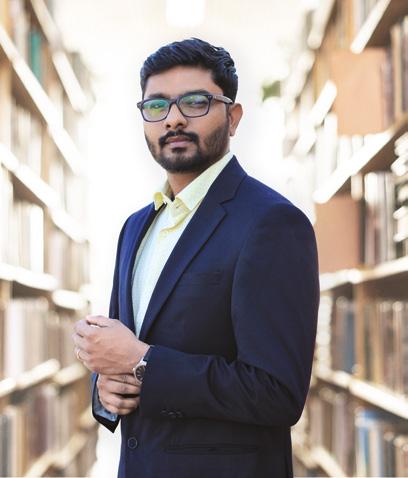
Ex-M
Mr. Amulya Sah, PGD PM & IR, PG Diploma in PM&IR (XISS Ranchi)
Chief Human Resources Officer, Former Head HR group Samsung R&D Institute India,Transformative HR Leader, Change agent, Digitization facilitator, Engagement architect, Trainer and Diversity champion.

Dr. Varughese K.John, PhD, MBA, MPhil, MCom, LLB.
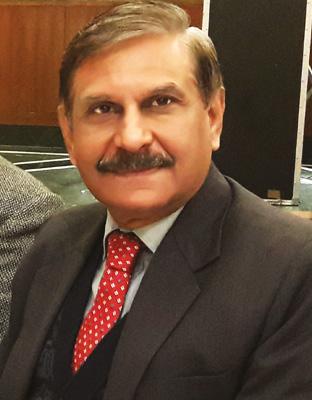

Former Program Director, MS in Management Program, GSATM - AU
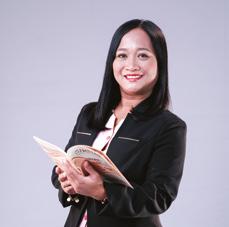

Dr. Ajay Shukla, Ph.D, MBA, BE. Co-founder and Chief Strategy Officer at Higher Education UAE

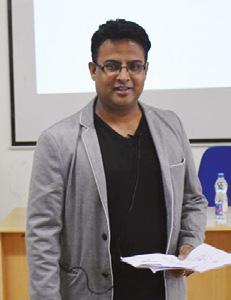
Dr. Kuldeep Nagi, Ph.D, MBA, BSc.

Former Program Director of Ph.D, Recipient of Fulbright Fellowship Award & Dan Evans Award for Excellence and Writer columnist.
Shanthi Rajan (MSHRM, FHEA, AMCILT) Director, Institution Development, University of Stirling, RAK Campus, UAE.
Dr. Hans A. Andrews Ed.D. Distinguished Fellow in Community College Leadership, Olney Central College, Illinois,USA

Mr. Sreedhar Bevara, MBA, B.Com
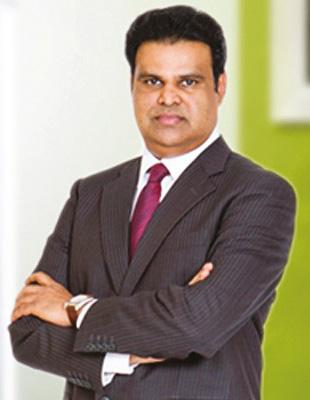
CEO at BMR Innovations, Ex Senior General Manager at Panasonic, LG, The Hindu, TATA, Author: Moment of Signal & The Roaring Lambs, Motivational Speaker & Leadership Consultant.
Dr. Khyati Shetty Ph.D (Marketing)., SFHEA (UK), MBA (Marketing), PGHRM, BA (Marketing & Economics)
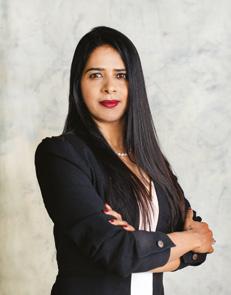
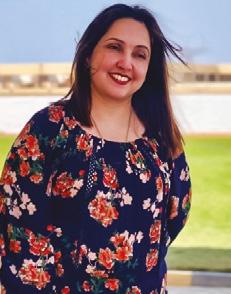
Dr. Manoj Varghese, Ph.D
Senior Director - Global Partnerships, Advisory & Consulting - Connecta® , Head of Advisory BoardHigher Education Digest® & K12 Digest® , Adjunct Faculty - Assumption University, Former CIO - Athena Education, Former Global Director TechnologyGEMS Education



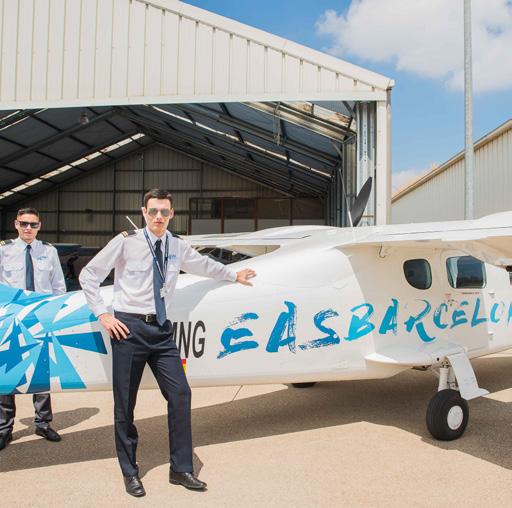
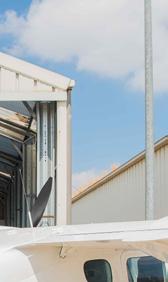


Prof Dr. Ger Graus OBE, Global Education Adviser, Dr Ger Graus OBE Consulting Ltd
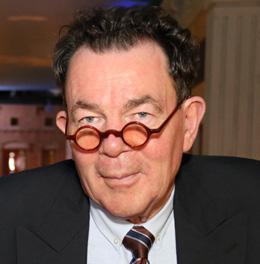

THE FUTURE OF EDUCATION IS VIRTUAL: A LOOK INTO AR/VR IN LEARNING
Franck Milet, CEO and Founder, Secondworld.ch

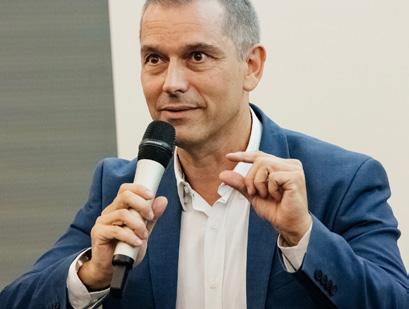
Vivek Bhandari, Founder and CEO, Scholarly


Dr Tracy Nicholson, Program Chair & Assistant Professor - School of Professional and Continuing Studies, University of Richmond

Bob Spires, PhD., Associate Professor, School of Professional and Continuing Studies, University of Richmond
Yacine Ndao M.Ed., Director of Student Advising & ADA Coordinator, The Los Angeles Film School
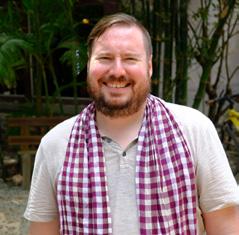
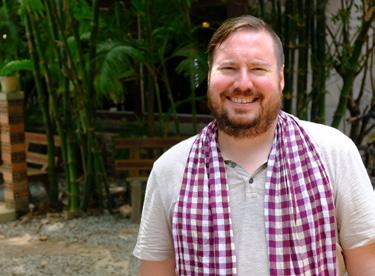



Manuel Barreiro Castañeda, Founder & Chairman, Aston Group and Founder, Aston Barreiro-Ugalde Foundation
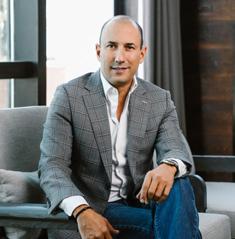


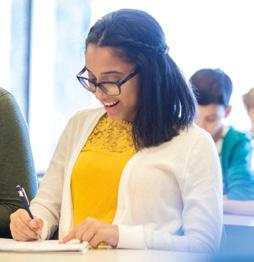
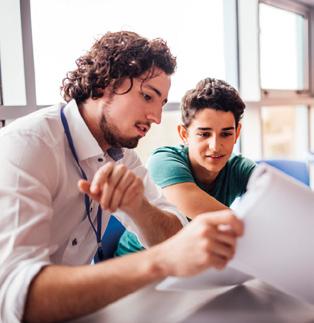
Prof Dr. Ger Graus OBE, Global Education Adviser, Dr Ger Graus OBE Consulting Ltd
According to you, how has education changed over the years? Do you think it has changed for the better?
Not with the times, and no not really. Let me paint a picture that could and should be much prettier.
First and foremost, let us distinguish between ‘schooling’ and ‘education’ – 9 to 5, 192 days per year, versus always. Driven by governments, schooling has narrowed; a
narrower curriculum, only valuing what we can measure, less and less relevant to the goings-on in the real world, providing less and less purpose. Children and young people are numbers, stuck in the supply and demand model of the first and second industrial revolutions and all that followed. Teachers are not respected when they should be. We live in a world of hype over substance. Secondly, the
We are experiencing a loss of purpose, too many “I don’t know why I’m doing this” moments
Professor Dr Ger Graus OBE is a renowned figure in the field of education. He was KidZania’s first Global Education Director and founding CEO of the Children’s University. In 2019, Ger became a Visiting Professor at the National Research University, Moscow, Russia. He is also a Board Director at Hello Genius, and chairs the Advisory Boards at Kabuni, UK, and Twin Science, Turkey. Ger moved to the United Kingdom in 1983 where he began his teaching career, later becoming a Senior Inspector, and Education Director. Dr Graus is a member of Bett’s Global Education Council; DIDAC India’s Advisory Board; Junior Achievement’s Worldwide Global Council; chairs the Beaconhouse School System’s Advisory Board, Pakistan; advises the Fondazione Reggio Children, Italy, and the International Schools Partnership (ISP); and has been invited to help shape the future of education in Dubai as a member of the Dubai Future Councils.
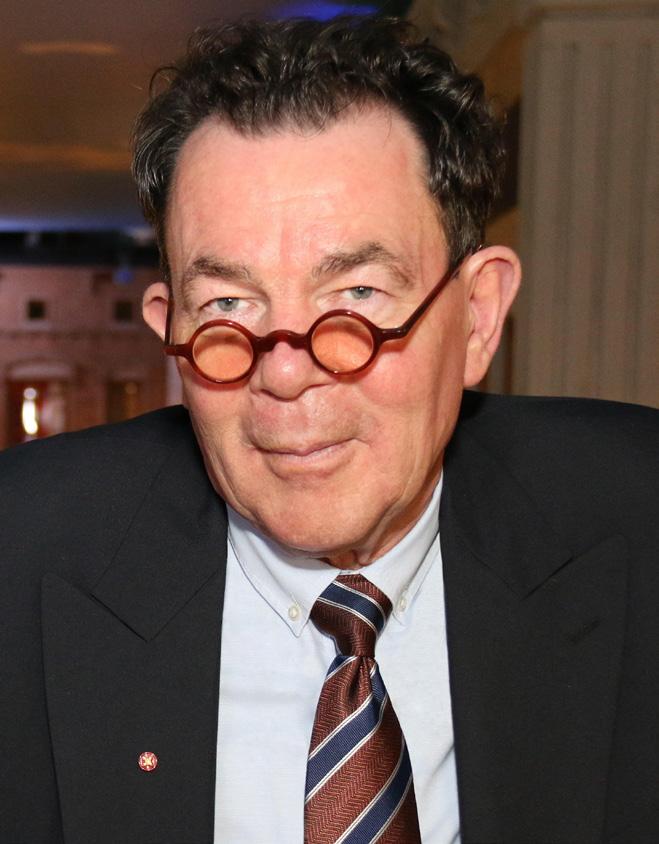
same applies across the piece: from early years to higher education.
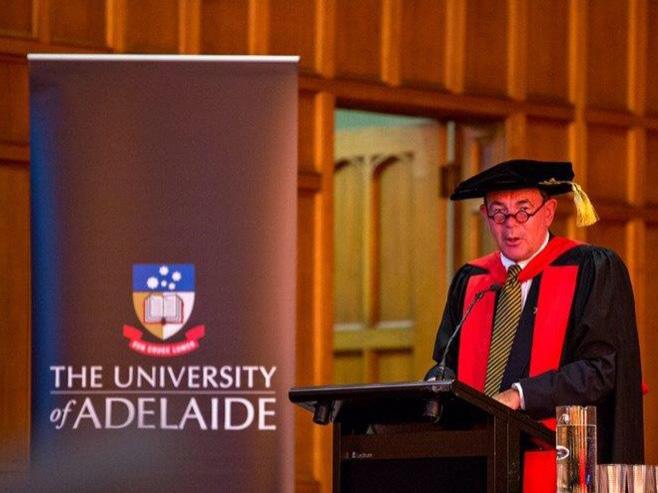
Education opportunities on the other hand are greater, better, cheaper, more accessible, and increasingly relevant to the individual rather than the masses. Not bad. Enhancements in technology, how we access, and ever more adventurous content will add to this with increasing speed.
So why are we not trying harder to bridge the gap between what can be taught in school and what can be experienced and learned out there? What are we afraid of? Breaking a mould that is long broken?
In terms of educational opportunities and bridging the gap between theory and experience, governments can get in the way; for example, Brexit means that United Kingdom university students can now no longer access the Erasmus Programme. Governments can also be of great support; for example, in the roll out of accessible high quality internet infrastructures in the Netherlands, Switzerland, most of Scandinavia, South Korea and Japan. Have internet, will travel!
We are experiencing a loss of purpose, too many “I don’t know why I’m doing this” moments. And a loss of trust; politicians do not
trust teachers – hence inspection regimes that do not make a difference to the life chances of children, and, sadly, teachers at times do not trust the children and young people as much as they should. Parents seem to trust no one, and often think they know best – which they mostly do not. Our aspirations are greater for more, but not for all. Children and young people can still only aspire to what they know exist. The curriculum is largely irrelevant to the needs of our society. The many, many children and young people who are successful in their schooling all too often do not know what to do next. That bit is broken unless
you can afford a private education for your child, with all the trimmings. The gap between rich and poor is increasing. In the sixth largest economy in the world children still come to school hungry. It is not all Maths and English you know.
We know more and we are better at recognising the issues but not that much better at addressing them. Too much is out of the control of those who know best, our headteachers and senior leaders. Our teachers are better and work harder than ever but are swimming against an increasingly strong tide.
Imagine if we had a shared sense of relevance and purpose, each knowing which roles to play and were led by the experts; trust would have to follow, and we would have a world where “every child is everyone’s responsibility” ( Vanessa Langley – Headteacher, Arbourthorne Community Primary School, Sheffield, United Kingdom), where everyone is an educator and everyone is both a role model and scaffolding to a child. It is not rocket science.
Incidentally, I tend to use the words children and young people more than any others, because they are easier and better than pupil, learner, student or whatever; it is about who, not what, they are; it is about the person specification, not the job description.
With technology on a rampant path in education. There is always a need for teachers to stay updated with the times. In a time like this, what are a few simple methods that teachers can adopt to better their teaching? How can they use tech as a benefit?
As a tool to enhance learning at its very best. In schools, children and young people will be able to see everything, experience most things,
We need to shift our accountability from serving the system to serving the child and the young person and their potentials
and in time become confident, independent, curious learners, wishing for more. Look at the opportunities offered by technology in the form of Hello Genius, Kabuni or Twin Science, to name, from personal experience, but a very few.

But, we may have to reevaluate the role of the teacher. Of course, teachers need professional development, continually, like doctors. But, to do what? Who is the teacher? The teacher as the purveyor of knowledge, the project manager of children’s learning, or both? With new technical support roles aiding them, and these could be older learners who are remunerated. My 17-yearold daughter for example knows more about technology than most; why not pay her to do a job, in her school, thus allowing the teacher to focus on the children, their learning, wellbeing, and the awe and wonder? What about parents, carers, the world of work, the third sector, communities, other schools as educators serving the context in which children find themselves? How about future pathways education for 6-year-olds with the support of the community, the world of work, higher education as educators, some of it on- and some off-line? [Keep an eye on my work with the Independent Schools Partnership.] Work experience for 8-year-olds to widen horizons and provide a sense of purpose? Virtual visits to the Guernica at the Museo Reina Sofia accompanied by a local artist in residence? Why on earth not? But, give teachers a break, and a give them helping hand.
The answer is also that learning, all learning at all ages, is a jigsaw of partnerships; find the right partnerships and see a better and bigger picture.
We really need to rethink all this and make courageous decisions. For the sake of our children and young people.
Remind yourself what it is was like to be the same age as the children and young people you are with, get to know them and then stand in their shoes
Though tech has become part and parcel of our lives today, there are disadvantages as well. When it comes to education, how do we strike a balance with students in the process of learning?
By religiously focusing on the two key aspects: the children and young people, and the learning. The rest is secondary, and common sense.
Technology is there to serve, and it is important to distinguish between ‘good tech’ and ‘tech for good’. The focus sadly is still too much on ‘good tech’, technology that is shiny and promises the world. ‘Tech for good’ is technology to make the learning better, faster, more exciting, full of awe and wonder, endless; it has purpose.
We also have yet to define new methodologies properly, e.g., hybrid learning, where we float seamlessly between environments, be they onor off-line. Hybrid learning is still too much like

hybrid cars: either-or, with a constant worry that we might run out of gas.
And, finally, we must remember where Covid-19 shone a light: unless in educational terms we see access to technology and its infrastructure as a global educational entitlement – like, in health terms, access to clean water, we will aid in the widening of the gaps between have and have-not and can and can-not.
How did you gain that entrepreneurial spirit to establish the Children’s University? What was your motivation?
From experience. Prior to the Children’s University, my role as Director of the two Wythenshawe Education Action Zones (WyEAZs) in South Manchester in the early 2000s taught me that private-public sector partnerships work, not in the conventional sense but in a win-win scenario. By the way, Wythenshawe is now also known as MarcusRashford-land!
Education Action Zones were an initiative under Tony Blair’s government which focused on areas of severe socio-economic disadvantage in partnership with the private sector, in my case Manchester Airport Plc. The aim was to raise the bar in communities, and with communities, including the business world. We had, by law, the right to do things differently in order to make things better; more of the same would have just fed the definition of insanity: keep doing the same thing and expect different outcomes.
To all intends and purposes, this set-up behaved like a social enterprise company: not for profit, with the heart of a charity, and the head of a business. It seemed common sense to take this approach into the Children’s
University and contextually adapt it. It worked, and it worked globally.

Clearly, you are a global citizen. With numerous involvements in different organisations and continents, do you believe in the philosophy of ‘One Size Fits All’?
No. Categorically. Each child, each young person is unique, a citizen, competent and a holder of rights.
I have never understood the ‘one size fits all’ terminology. We do not apply it in everyday life, in fashion for example, or cars, or television screens; even in economy class on flights there are aisle and window seats, or those with more legroom. Our world pretty much recognises that we are all more or less different – except, seemingly, in the debate
The awe and wonder of learning will always be there as long as we have wonderful teachers and educators
we have around schooling. So, I will just leave that there.
What part of education do you think needs improvement? How can it be implemented?
Firstly, all of it and all of the time. We have to agree not to stand still, because our children and young people, and their lives do not.
We must also agree that we need to focus on the learner before anything else. We need to shift our accountability from serving the system to serving the child and the young person and their potentials. We need to trust the children as much as they trust us. A child is not a citizen of the future but of the here and now. In a society where everyone will be a lifelong entrepreneur of some kind, schooling and education can no longer be a mass production affair; that served the first and second industrial revolutions and all that followed, as was so aptly described by the Scottish comedian Sir Billy Connolly: “At 14, the schools opened their doors and the shipyards, at the same time, opened theirs. I joined the wrong queue and became a welder.”
We suffer from a lack of preparation and preparedness for the next phase of schooling. Every time, all the way from kindergarten through to university and beyond. Ours is an educational pass-the-parcel culture where child is a product. Schooling is not a smooth journey; it is a bus ride with many stops and starts.
Finally, we should start early. I have never understood why there is so little focus, including resources, on early years. In schooling terms, we invest more the older the learners become. Who in their right mind, when building a
house starts with the roof? We urgently need to turn our thinking upside down, so that we can start with the best possible foundation on which to build our children’s lives. We need them to enjoy the fact that in life there are no straight lines and be competent to cope with unexpected items in the bagging are of life. Skills start early!
As a professor, you have experience in research and learning. If you had to choose what in your opinion is the most important part of research?
It’s focus. Is the research conducted and published with a view, however broad, to make the world a better place? Do its outcomes encourage positive activism? Education research needs us to be able to reimagine and action a better childhood and all that follows, time and time again.
Share one tip with us for students entering the field of education. What do they need to prepare themselves for?
A quote from my favourite book, ‘The Little Prince’ by Antoine de Saint-Exupéry: “All grown-ups were once children, but only few of them remember it”. Remind yourself what it is was like to be the same age as the children and young people you are with, get to know them and then stand in their shoes. Empathy will allow you to plan and execute your teaching to the individual children and young people in front of you. It will allow you to become the role models they need. Do what most governments do not do: care deeply. Then let your passion become your purpose.
Rosy. With and without my glasses. When it comes to the education of our children and young people, we should only be allowed to be optimistic. There can be no other way. Hope, optimism, and their realisation are our collective responsibility. As educators and teachers, that is what we do.
All futures will always have schools that are ‘more than a school’, in communities that care, with wonderful teachers and educators who go the extra mile, and children at the centre. Much of the rest is about context and circumstances and often out of the direct control of the schools and their leaders: finances, resources, support services, infrastructure, technology, et cetera.
I would like to see a future where schooling and education are depoliticised, where experts are the leaders and decision makers, and where private-public partnerships work under the umbrella of ‘return on involvement’ as opposed to ‘return on investment’, for the benefit of the children and young people, and their futures.
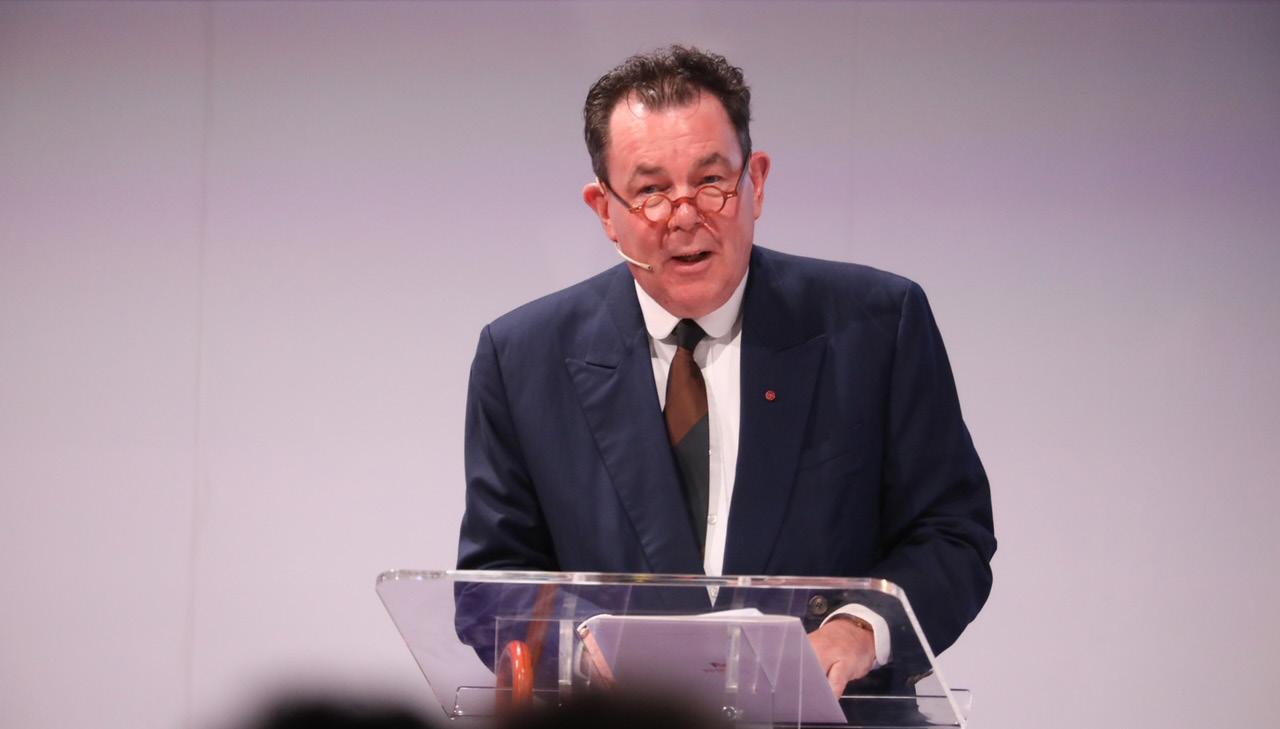
The awe and wonder of learning will always be there as long as we have wonderful teachers and educators. I hope we will see in future recognition and greater respect for the professions and that ‘Tr’ for teacher becomes the equivalent of ‘Dr’ for doctor.
Who, in your personal opinion, has been an inspiration to you and why?
There are many, personally and professionally, from my family of course and friends to colleagues and fellow professionals.
Professionally, the person who stands out for me is Professor Carla Rinaldi, President of the Fondazione Reggio Children. Carla Rinaldi’s thinking about children from the earliest of ages, their families, and communities, their education, including schooling, stands as an example to all of us. Her emphasis on learning is beyond boundaries of any kind; her research and analysis are peerless. She is in my view one of the most important educational philosophers since the 1950s. She is also one of my absolute best and very dearest personal friends!
What does the future of education look like to you?

Dr Tracy Nicholson, Program Chair & Assistant Professor - School of Professional and Continuing Studies, University of Richmond
Tracy Nicholson has a master’s degree in Human Resource Development from George Washington University and a PhD in Public Affairs and Nonprofit Management from the University of Texas at Dallas. She started her career as an accountant with a major cigarette manufacturer and then sought roles as a human resource business partner in the public sector and higher education. In these roles, she leveraged her multidisciplinary skills in human resources, program management and workforce compliance and improvement. She began employment at the University of Richmond in the School of Professional and Continuing Studies during the pandemic and currently serves as program chair and Assistant Professor of the master’s in human resource management degree program.
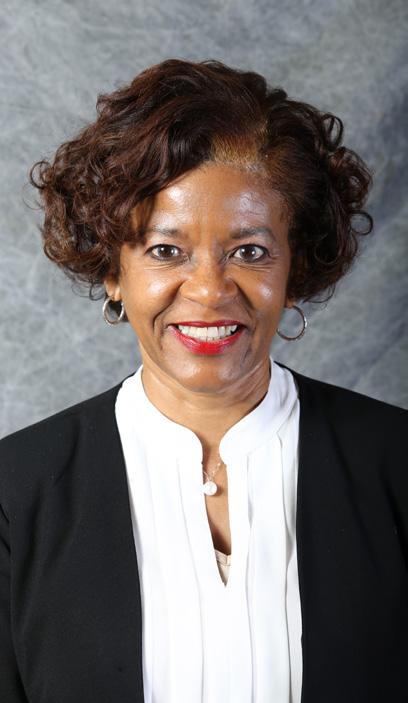
Student-athletes are an integral part of the undergraduate student body more so in 4-year colleges and universities as opposed to graduate degree programs. This changed in 2019 when the National Collegiate Athletic Association, in response to the pandemic and its impact on the 2020-2021 season, granted undergraduate student-athletes the fifth year of eligibility to compete in various athletic sports contingent on their enrollment in a graduate degree program. This extra year of eligibility provided students with a gateway to obtain a graduate degree at select universities willing to accept them while on an athletic scholarship. In the university, we experienced increased student-athlete enrollments in professional and career-oriented degree programs, specifically the master’s and graduate certificate degree programs in human resource management. This article discusses the advantages of student-athletes
obtaining graduate degrees in human resources and both the challenges and lessons learned for higher education in recruiting and retaining student-athletes into professional career-oriented degree programs.
The opportunity to prepare student-athletes for human resource careers as managers and leaders in any organization, including athletics, was the major advantage that increased the human resource management programs’ student enrollment and graduation rates for the past two years starting in 2020. The program prior to the pandemic had few student-athletes enrolled. Next, the addition of student-athletes created a diverse classroom where working professionals and student-athletes shared different perspectives on human resource topics such as training and development and performance management, experienced both in
Time management is often a problem for any working adult in a master’s degree program, but for student-athletes time management became problematic when group projects were assigned to non-student athletes
The increase in student-athletes enrolled in the human resource management professional degree program highlighted the need for athletic academic advisors, the human resource management program advisor and the program chair to collaborate to ensure athletes’ success
the workplace and on the athletic field. The student-athletes brought a competitive spirit to the classroom environment and excelled in game-based learning strategies. Instructors used Kahoots, a digital- learning platform that creates quiz-style games students can play using a cell phone in class. The games-based learning strategies tested students’ knowledge of the class reading assignments and US human resource employment laws and employee relations. They were motivated to win so designing a competitive exercise engaged them to learn and outperform their teammates. One of the highlights of the program shows how many of the student-athletes were able to transfer their physical athletic skills and the mental focus used in sports to work on group projects and
improve their communication skills, all critical skills needed by human resource professionals.
The first challenge was the struggle to adapt the graduate degree programs to conform to the one-year NCAA eligibility scholarship limit proved difficult for the student-athletes. The recommended course load per semester for working adults seeking a master’s degree is two graduate courses with degree completion in 1.5 or two years. The student-athletes were limited to one year to earn a master’s degree which required three courses per semester to receive financial aid. In most instances, the student-athletes balanced three courses each semester in addition to athletic workouts, scheduled games, travel
time to the game and back to the school and team meetings. School advisors worked closely with each student-athlete to strategically plan a course schedule to ensure the athletes could graduate while financial aid was available. In most cases, the student-athletes enrolled in three classes per semester. Unfortunately, this course load proved to be stressful for the student-athletes and the instructors as well. In most instances, instructors granted late submissions of class assignments met with student-athletes for one-on-one coaching and in some instances allowed students additional time to make up work missed during major tournaments and athletic conferences after the semester ended.
Time management is often a problem for any working adult in a master’s degree program, but for student-athletes time management became problematic when group projects were assigned to non-student athletes. The student-athletes were balancing practices, weight training and travelling to games-thus leaving little time to contribute to a group project or team assignment. The instructors struggled to create teams of either all student-athletes or groups of diverse backgrounds to increase community building and learning among all students. Of special interest is student-athletes were outgoing, aggressive, highly engaged and competitive on the field, but in class, their demeanour was less expressive. Also noteworthy is the observation that student-athletes were hesitant to participate in class discussions due to their limited work experiences, fatigue, or concern for being viewed as less competent than adult students with work experience.
The increase in student-athletes enrolled in the human resource management professional degree
program highlighted the need for athletic academic advisors, the human resource management program advisor and the program chair to collaborate to ensure athletes’ success. During the fall semester of 2020 one of the pitfalls noted was during the last two weeks of the semester student-athletes struggled to complete the more rigorous assignments which required more effort than undergraduate coursework. In response, a formalized student-athlete orientation was held at the beginning of the next fall semester to include student-athletes, coaches, assistant coaches, the human resource management academic advisor and the program chair. The orientation meeting explicitly reviewed and introduced the studentathletes to the requirements and expectations of graduate-level work, with student support services staff available to assist students in writing, public speaking, and other forms of academic support. In addition, instructors completed mid-semester grade reports and feedback on each athlete’s performance in class. The grade report sent to the program chair provides feedback on where the student-athlete needed more support from the instructor, athletic coaches, or the academic support team to address any deficiencies prior to the end of the semester.
As higher education faces falling enrollments, it is imperative educators continue to recruit and strive to retain and support diverse students in graduate professional degree programs, including student-athletes. Athlete tenacity and teamwork displayed on the athletic field are transferable to the classroom. As student-athletes enrol in professional degree programs, they learn knowledge and skills to cross the finish line to future leadership roles in the workplace.

Website: Location: Melbourne, Australia
Admission:
Website:
Location: British Columbia, Canada
Admission:
https://flying-school.com/ https://www.cacbc.ca/ https://flying-school.com/enrol/ https://www.cacbc.ca/enroll
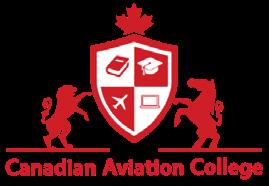
Website: Location: Barcelona, Spain
Admission:
https://easbcn.com/en/contact/


Website: Location: Pampanga, Philippines
Admission:
https://www.hau.edu.ph/programs/school-ofengineering-and-architecture/4
Website: Location: Florida, USA
Admission:
https://www.fitaviation.com/ https://www.fit.edu/apply/

https://easbcn.com/en/ https://www.hau.edu.ph/ https://flighttraining.co.nz/
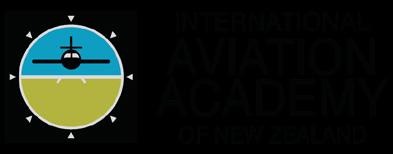
Website: Location: Christchurch, New Zealand
Admission:
https://flighttraining.co.nz/application-forminternational-students/
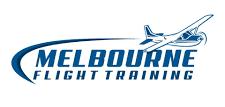

Website: Location: Florida, USA
Admission:
Website: Location: Svedala, Sweden
Admission:
Website: Location: Piraeus, Greece Admission:
https://aviation-academy.com/international-office/

https://mlbflight.com/ https://southsweden.se/ https://t3a.academy/

Website: Location: Sharjah, United Arab Emirates Admission:
https://t3a.academy/inquiry-form/
https://aviation-academy.com/ https://mlbflight.com/private-pilot-ppl/ https://southsweden.se/full-programs/
Today’s learners and faculty have high expectations, requiring an integrated and exible learning experience that operates seamlessly and intuitively. By partnering with Blackboard, you can enhance your institution’s brand by providing students and faculty with a holistic and integrated modern learning ecosystem.
Blackboard brings together the technologies and services you need to lead your institution through this digital transformation.
To learn more, visit blackboard.com

Aviation has become a new career for students to explore. With hi-tech innovations and an objective to offer aviation training at the highest level comes the European Aviation School Barcelona. The school has an experienced management team with over 20 years of experience training and developing excellent pilots. Standing apart from other aviation schools, specifically in its implementation and operation, EAS Barcelona is highly cooperative, working together to positively and effectively complete all of its work.
EAS Barcelona is a training institution that thoroughly satisfies students with an all-around academic experience. Students can obtain the best possible result in their training. EAS Barcelona intends to be a leading European aviation training enterprise

EAS Barcelona arose from the initiative of a highly specialized and experienced team to establish a quality aeronautical training centre in one of Europe’s most attractive cities.
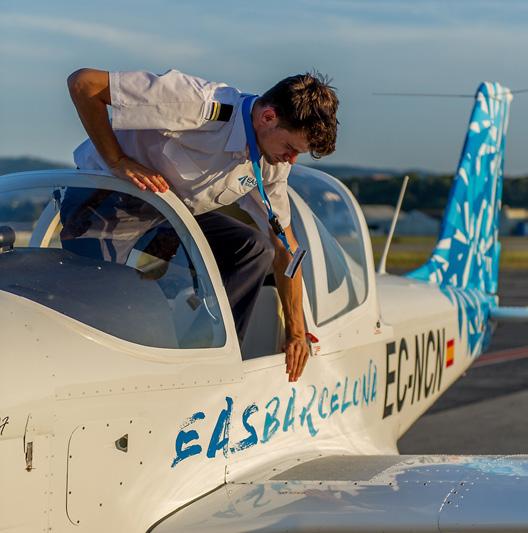
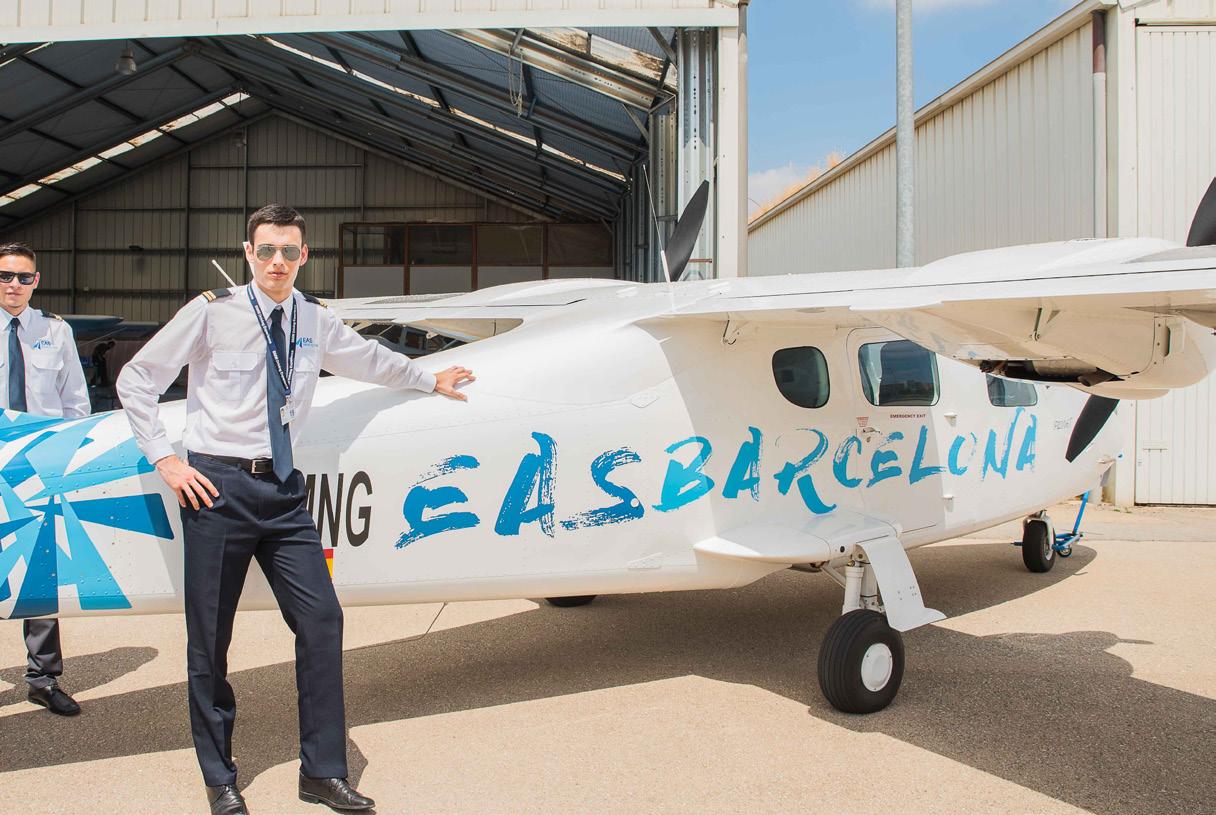
synonymous with quality training. In this manner, EAS Barcelona aims to help students complete their training with the best possible results, accompanied by a wide range of skills: not just with their intellectual ability but also with sound judgement, scientific knowledge, and occupational aptitude.
The EAS Barcelona team has achieved exemplary results over the years. Additionally, the matter of safety permeates every activity undertaken at EAS Barcelona. To EAS Barcelona, global safety requisites, which become increasingly ambitious and stringent with time and, thus, more demanding, are not an
Pilots and cabin crew who have progressed through their formal training at EAS Barcelona are flying today, and doing so with great success, in a multitude of national and international airlines.
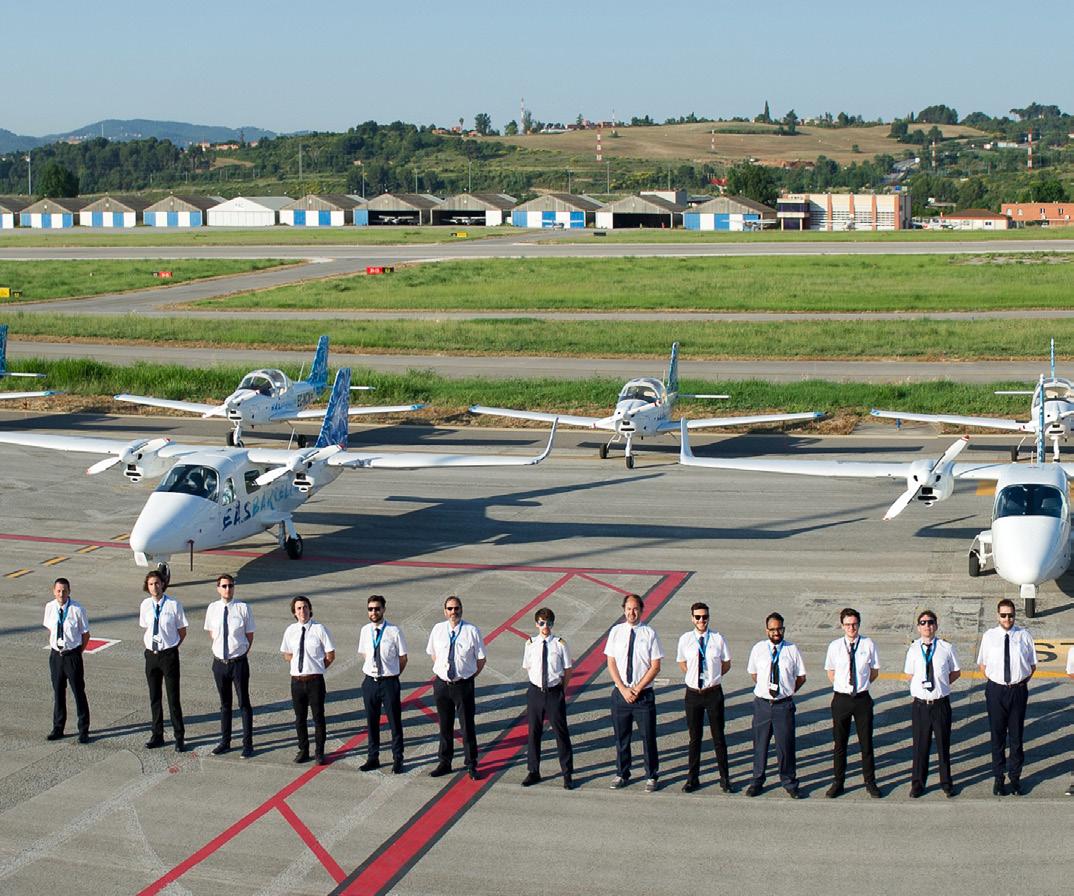
inconvenient obstacle nor a difficulty that must be overcome. Rather, they are an opportunity for constant improvement, a basis for action and, fundamentally, the school’s overall purpose. This characteristic of EAS Barcelona is the first unquestionable argument in recognising quality and safety as inseparable and essential factors. The academy believes that it is not solely on how we act or how we want to act, but it is the achievement of one’s objectives. This thought is woven into the school’s DNA and imbibed in the students. It is only by extending the importance of quality and safety to everyone involved in EAS Barcelona at every level - be
they instructors, organisers or directors– that these currently desired levels of quality and safety may be reached.
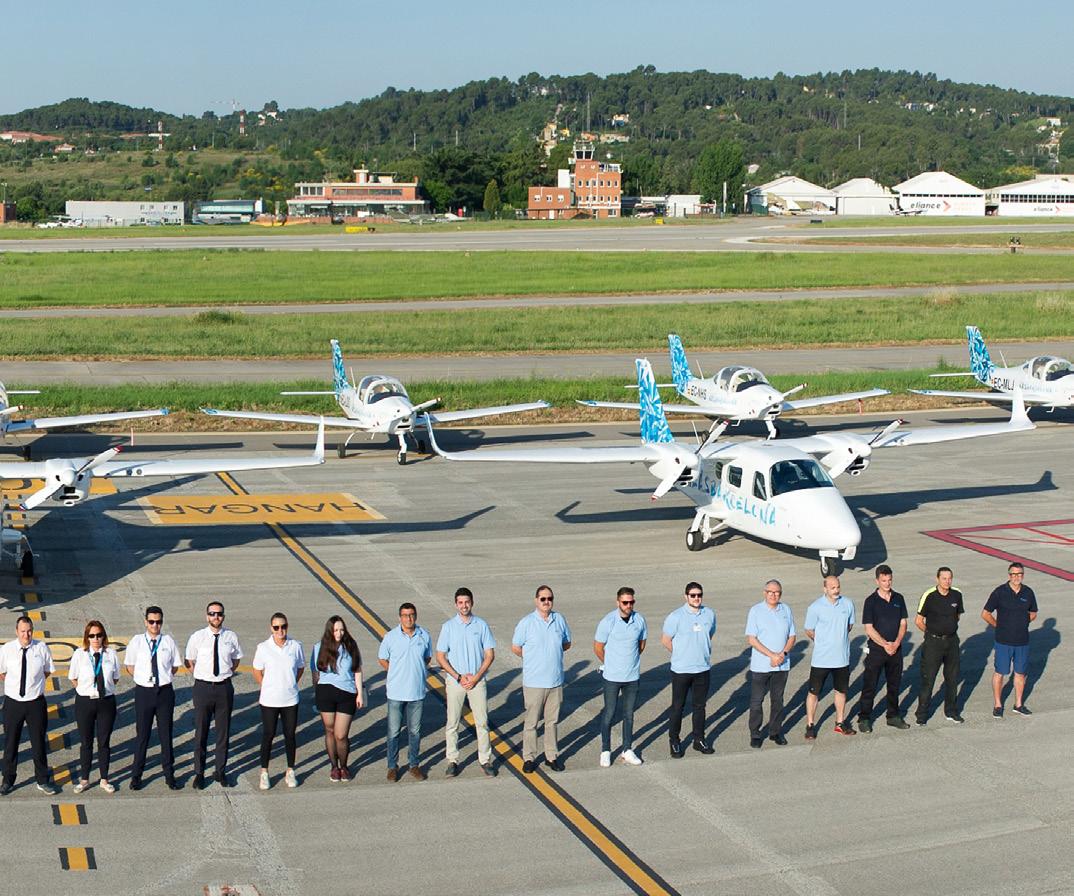
The city of relaxation
Barcelona is a beautiful city, given its unique personality. It is universally recognised for its multiculturalism, with rich offerings of recreation and leisure activities and richness in art and architecture. Barcelona is known for its environmental perks, opening up to the sea and nestled in by mountains; and, among many other things. Training and studying as a pilot in Barcelona is an excellent commodity for those
who already live there and offers a fantastic opportunity to students from other areas.
For foreign students, their aeronautical training will accompany a vastly enjoyable stay. Barcelona’s surroundings are equally as enticing and attractive. A multitude of physical activities and many other free time activities are available to all, from the sea to the mountainsall of it a short distance from Barcelona. Not far from the city centre, we find the Costa Brava, the Pyrenees Mountains, Montserrat, the Ebro Delta, and the list goes on, an almost neverending variety of natural spaces pleasing to all in one way or another.
The administrative headquarters of EAS Barcelona is located on Rector Triadó Street, next to Sants Station, where all of the theoretical classes and flight simulation training are carried out. Flight sessions are completed at Sabadell Airport, in which EAS Barcelona has its own office, flight tracker, flight preparation zone, Flight dispatch, and private lounges for students and instructors. Theoretical and flight simulation training phases in a large city Centre (Barcelona, Sants). The city’s location and layout give students quick and easy daily access.
Classrooms at EAS Barcelona are equipped with the most up-to-date technologies, IT, and computer software, along with ‘traditional’ systems that help students have a variety of experiences and allow for a holistic learning process. EAS Barcelona houses a radiotelegraphy room where students can complete their flight simulations from individual cabins in shared airspace with other instructional aircraft fleets representing actual aircraft. In another room, an instructor or controller manages the aviation
space (and the flights) of aspiring pilot students precisely like real flights are controlled in real air space.
EAS Barcelone has private meeting rooms that are fundamental for students to receive, in a regular fashion, and especially whenever desired, the orientation, assessment, and solution to any consultation or concern that may arise

Flight sessions are completed at Sabadell Airport, in which EAS Barcelona has its own office and flight-tracker, flight preparation zone, and private lounges for both students and instructors.
regarding their theoretical training. Facilities for the flight phase that is room for briefings, preparation and analysis of findings, along with the flight dispatch, are conducted at the Sabadell Airport’s service building, where students must be able to effectively arrange and organise all of the pre and post flight services, corresponding to both the flight school itself and those used by airport operators in air traffic control,
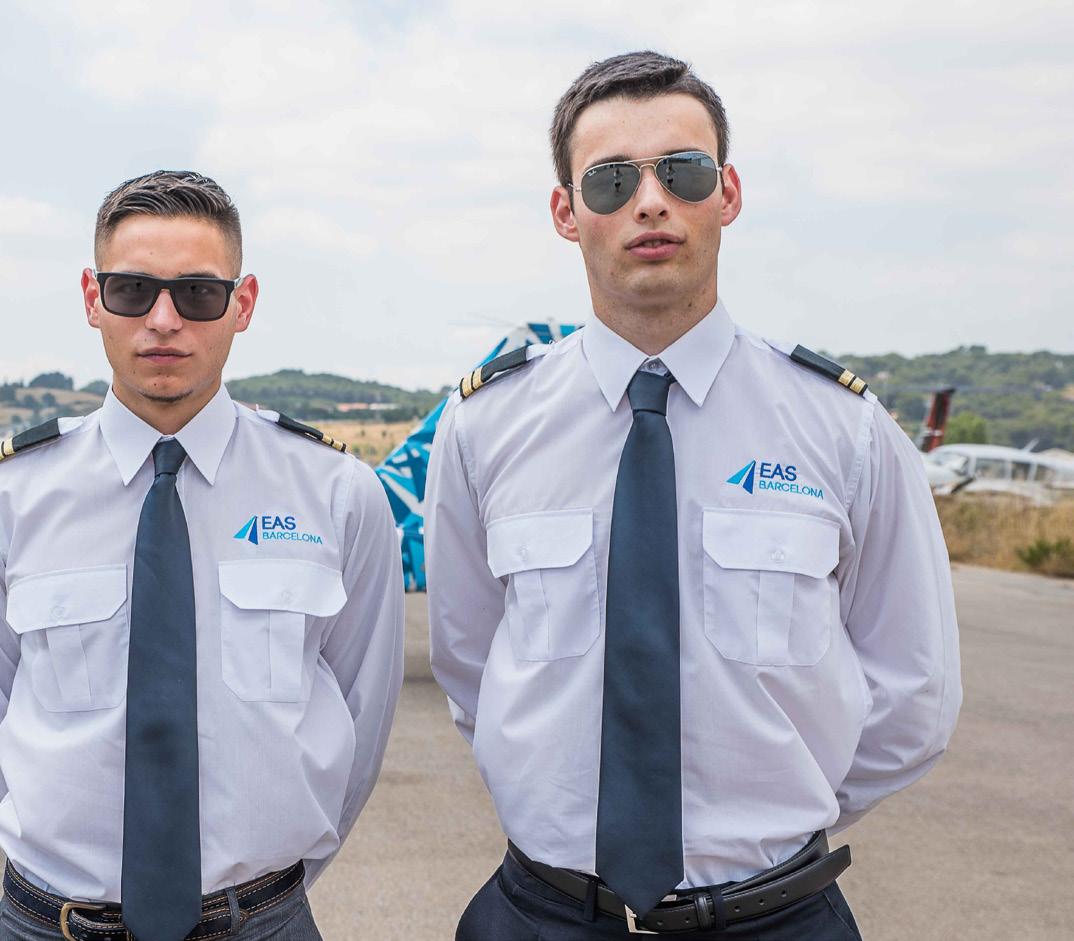
instantly and in the best terms, for both quality and comfort. This is how the professional world works and how the best results are achieved - as operational as they are educational.

Access to the school is quick, comfortable and above all, easy. Numerous means of public transportation can be used to reach the Plaça dels Països Catalans stop at Sants Station (Estació de Sants). There are local commuter trains, medium and long-distance trains, buses, and extensive metro
EAS Barcelona classrooms are equipped with the most upto-date technologies, IT, and computer software, but also equipped for the use of more “traditional” systems.
services. Access to Sabadell Airport, more specifically, to the EAS Barcelona offices and dispatch at the airport (in the airport’s main services building) can be realised by car from Barcelona on the C-58 highway or by train FGC local commuter train Line R4 from Sants Station or from other central train stations. Using public transportation, the theoretical class and simulator facilities, as well as the flight dispatch of EAS Barcelona, can be reached in approximately 35 minutes.
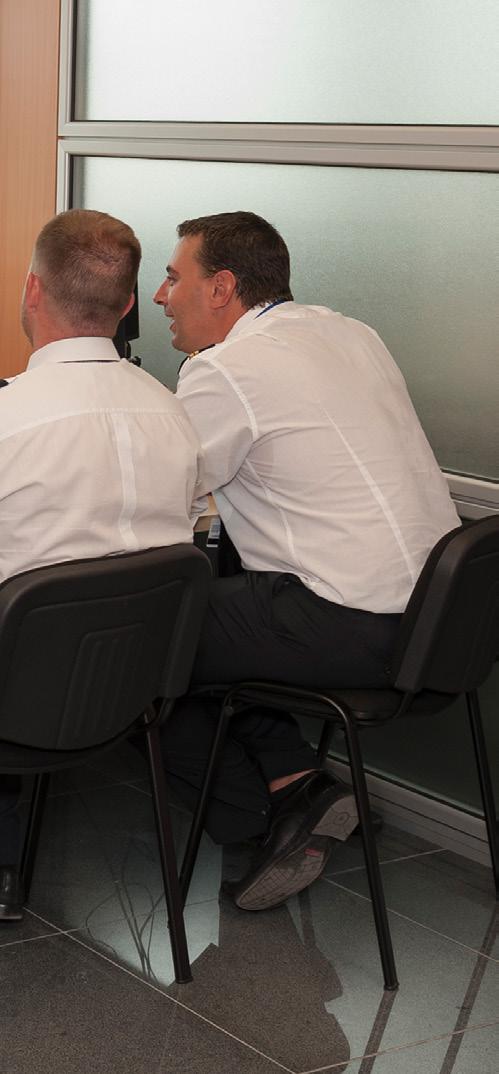
EAS Barcelona offers a range of courses for aviators and those who aspire to be in the Cabin crew. According to airline requirements, ATPL(A) integrated courses are offered for student groups previously selected for Airlines. In these courses, students from any country come to EAS Barcelona to train as future airline pilots. The ATP (Airline Transport Pilot) consists of three parts: the theoretical, flight simulator, and flight Phases. These three phases of the course are not undertaken sequentially, one after

the next, but simultaneously, well-coordinated and integrated for sound and practical learning. Only the MCC (Multi Crew Coordination) training, where students are trained in the coordination between pilots of passenger aircraft, will be conducted on its own at the end of the course. Practice flights are completed with single-engine aircraft first, and later dual-engine aircraft, increasing the characteristics of flight, navigation and systems along the way until completing flight simulations of the A-320 in the final phase of the course duration of the course 18 months.

The school also offers a Modular Program where commercial pilot training can be done modularly in those cases when applicants do not have enough time to attend ATPL(A) integrated course. The total duration of training will always depend on the necessary time to pass the theoretical exams and the time needed to do all the flight hours required. However, the total duration is estimated to be 24 to 36 months.
EAS Barcelona also offers specific courses for airlines that cover crew training, like the cadet programme and training for cabin crew. According to airline requirements, ATPL(A) integrated courses are offered for student groups previously selected for Airlines. Cabin Crew means those professionals present in aircraft cabins dedicated particularly to passengers’ security and flight comfort, and normality from passengers’ perspective. They are professionals called assistants, flight attendants or, generally, flight crew.
EAS Barcelona also collaborates with European ATOs (Approved Training Organizations) that, due to meteorological conditions in its countries or flight hours demand, want to do part of its training in Spain. For that purpose, EAS Barcelona offers flight operation logistics (operations room, briefing rooms
EAS Barcelona has opted for the latest cockpit technology used in all modern aircraft of global airlines, with the representation of the flight data on large screens that offer more information and better interpretation of parameters.
and simulators) and the accomplishment of different flight phases according to the syllabus of the ATO itself.

The quality of instruction and the initial training of a pilot is essential for the aeronautical industry. EAS Barcelone realises that in the next 20 years, there will be a need for more pilots who must be well trained. According to the current systems and procedures, EAS focuses on providing the best quality of teaching with modern aircraft with the latest technology and continuous improvement. At EAS, the management cares
every day about the well-being of students as well as their academic progress. Throughout their training, the students and faculty create a family and pleasant atmosphere so that students feel as supported as possible.
Currently and post-pandemic, the aeronautical industry is recovering from a hard blow. It is beginning to reactivate, which is why the demand for pilots is increasing and will increase in the coming years due to market demand. Due to the infrastructure of the school and the quality of instruction the school provides, EAS Barcelona is currently a good option for a professional pilot career.
Yacine Ndao M.Ed., Director of Student Advising & ADA Coordinator, The Los Angeles Film School
Yacine Ndao, M.Ed., is the Director of Student Advising and the ADA Coordinator at The Los Angeles Film School. She is an experienced student mentor with an enthusiasm to inspire students and to expedite progress by introducing new ideas to achieve both student and school objectives. Yacine earned a B.A. in Speech Communications from Monmouth College in Monmouth, Illinois, and a Master of Education in Instructional Technology from American InterContinental University in Los Angeles, California. She is multilingual in French, Wolof, English, Italian, and Spanish. In addition to her passion of guiding and mentoring international students, she has also mentored US Army soldiers in Vicenza, Italy. Yacine has 16 brothers and sisters, along with an enthusiastic weakness for French pastries.

There is no denying that the post-Covid era has yielded different expectations from college students who are now looking for greater flexibility in their educational programs and future careers
What are some advantages of studying in a film school? What career opportunities come up for graduates?
The L.A. Film School has a number of exciting industry partnerships and connections with recognizable companies, production studios and guilds. One of the biggest internship opportunities for students and graduates is through the Academy Gold Rising Program.
The L.A. Film School has been a highereducation partner with the Academy since the program began in 2017. This is a unique, DEIJ-focused experience for participants to make connections with A-level Hollywood talent and get exposure to all sorts of realworld, working and networking scenarios. Students also have the opportunity to receive one-to-one mentoring once they graduate from the Gold Rising Program.
Our instructors at The L.A. Film School are highly collaborative and have connections with Netflix, FOX, NBC, and more. Students can establish themselves in the industry while still in school by building a foundation of collaborators with fellow classmates and many industry-active instructors. These connections open up new opportunities for our students and graduates once they enter the entertainment industry.
How has the pandemic affected the way students see their future and career?
Has there been a shift in thinking and attitude?
Life as a college student is not easy – even sans-pandemic. With the common struggles of the average student, the pandemic added food, well-being, shelter, and mental health
insecurities. Hope gave way to uncertainty, which, in turn, created an imbalance in many students’ educational goals. The perceived roadblocks made the path to academic success highly challenging. Some students described the experience as a black cloud looming over their dreams.
However, because the pandemic was a universal experience that impacted everyone around the globe, it also allowed students and staff alike to view the devastation through the same lens. The empathy toward our students grew naturally, compelling us to transcend the limits of academic advising as we embraced the roles of a social worker, a friend, a guide, a mentor.
The omnipresent mental health struggles were exacerbated by the long-term isolation during the lockdown and, as academic coaches, we had to educate ourselves on new strategies and coping mechanisms to support our students.
Thanks to the leadership of The L.A. Film School’s educational team supported by the expertise of our staff, we achieved a seamless transition to remote classes. A student’s mind is very supple. With proper communication and support, we were able to reorient our students to an alternative learning platform that yielded much of the same benefits as the original instruction method. Since campus was closed for health and safety measures,

The L.A. Film School developed a curbside pick-up program that allowed students to access the equipment required for classes. For students who had left the state, we offered a TechKit shipment option that turned into a massive logistical operation. The heavily
the instructional delivery as authentic as possible. With all these programs in place, The L.A. Film School quickly closed the gap between the in-person experience and remote instruction. In doing so, we gave our students the possibility to keep their dream of a future in the entertainment industry alive. That gut-wrenching feeling of uncertainty at the inception of the pandemic once again gave way to hope. But we did not stop there: L.A. Film School graduates are now invited to participate in a post-graduate course audit program tailored to give them the brick-andmortar classroom experience they did not have access to during the pandemic.
The L.A. Film School is a unique place for students of all backgrounds and abilities to immerse themselves in the study of film and entertainment
hands-on courses were restructured to allow students to remotely participate in synchronous learning-conducive classes. In these classes, the instructor lectured from a studio or production set, keeping
But there is no denying that the post-Covid era has yielded different expectations from college students who are now looking for greater flexibility in their educational programs and future careers. With the realization that hybrid courses have the added benefits of a more flexible schedule and the ability to do work remotely, students do not want to return to the traditional way of residential campus programs. Current advanced technology provides a level of interaction and communication comparable to the classroom experience, so students have the expectation that schools will adopt a more innovative approach to education; one that includes shifting to hybrid models. During the pandemic, both instruction and student support were delivered remotely. So, students have also adapted to accessing support remotely, with most indicating a preference for this new model. Unlike in-person services, which sometimes require planning, remote services offer the flexibility of instant access including late and weekend hours. Students now prefer to have both options.
Regardless of individual circumstances, motivators, cultural background, or social status, what makes a student successful is the drive to learn, the hunger for knowledge, and the dream of success that dwells internally
What are some ways to motivate students to have a positive outlook on life? What advice would you give a student who is struggling?
The L.A. Film School’s approach to academic advising encompasses diverse strategies to respond to our students’ needs. When the pandemic hit and many processes were being shifted around to accommodate “the new normal,” we were well-prepared to align our services with the needs of our students. The vast majority of our students have indubitably enrolled at The L.A. Film School out of passion for the entertainment industry. Whether it be a love for music production, animation, film production or the entertainment business, it is our focus at L.A. Film School to cultivate that passion. Yet, it comes with numerous sacrifices.
In L.A. Film School’s Student Advising department, we accompany students throughout their enrollment to ensure that their academic experiences nourish their career dreams. Our extra-curricular programs encourage students to feel that they are a part of something
akin to a community. Transformative solutions to everyday challenges are not only discussed with students individually, but also in group settings. We have developed student activities that foster interdisciplinary collaboration and, together, students from different academic programs engage in complex discussions surrounding extraordinary life circumstances and explore experiential problem solving. At L.A. Film School, intrinsic motivation is encouraged through every interaction with students. One universal piece of advice to students who face hardships is to allow themselves to be vulnerable and to rely on the support systems in place. Higher education is not a race to the finish line, but an experience to endure, enjoy, nurture and mold with the help of a supportive and sustainable roadmap.
What does your role as the Director of Student Advising and the ADA Coordinator at The Los Angeles Film School entail?
As the ADA Coordinator at The L.A. Film School, I manage our Student Disability
Services by providing guidance and services to students with disabilities.
In my role as the Director of Student Advising at The L.A. Film School, I oversee a team of senior academic coaches, military academic coaches, and peer engagement specialists. Academic coaches are trained to provide students with completion coaching, assistance, and guidance on overcoming barriers to success. Those barriers are constantly shifting, but they mainly revolve around issues with housing and transportation, mental and physical wellness, time management, and behavioral concerns. We provide individual student advisement on study plans and skills, time and stress management, and other student success skills and strategies. Finally, we motivate students to develop positive and effective study habits for long-term academic success. In other words, we empower students to think critically and make impactful decisions.
As a child, I quickly became aware of the beauty of diversity and global exchange. At the age of 11, I spent a summer in Belgium with the Children’s International Summer Villages, better known as C.I.S.V. It is a global summer camp created in the 1970s by Doris Day, a psychologist who through her reflections on wars and extreme nationalism amongst other evils, developed the concept of a place where children from around the world would come together and break the barriers of misunderstanding by learning about each other. Those children would build a new world where everyone would have a place.
That experience changed me forever and the once sheltered 11-year-old turned into a
critical thinker with a very broad view of the world. A decade later, when my plans to work for the United Nations failed to materialize, I reoriented my focus on academic advisement as a means to empower young men and women, similar to how I was inspired by my own academic advisor back in the day. That’s when I decided to pursue higher education support services with a focus on international students.
Being
The Los Angeles
has creativity bursting at every corner. What benefits do students enjoy in such an environment?
It doesn’t get much cooler than being in the center of the Entertainment Capital of the World. The L.A. Film School campus is centrally located on Sunset Blvd., one of the most iconic boulevards in Los Angeles. With an expansive, four-building urban campus, L.A. Film School students can experience the magic of Hollywood and soak up all things the entertainment industry has to offer while they earn their degrees. The programs at L.A. Film School are focused on training students in real-world working environments, using technology and software that the professionals use every day. We encourage our students from different programs to crosscollaborate with each other and help with thesis projects and creative assignments throughout their time in the program.
The L.A. Film School is a unique place for students of all backgrounds and abilities to immerse themselves in the study of film and entertainment. International students are welcome to study on campus, and we have a robust International Admissions Department to help students looking to enroll in one of our degree programs.
Can you tell us about a moment in your career that is dear to you and why?
I could share a plethora of moment that keep me going, but today, I will share an anecdote that keeps me smiling every day. During one of our monthly team bonding events, one of the academic coaches shared a very personal sentiment with the rest of the team. With a genuine sentiment of appreciation, this employee explained that – despite commuting 2 hours to work – she was grateful for the opportunity to work with such a diverse and dynamic team. This employee candidly pointed out that she drew much inspiration from this team, which – to her – personified high standards of humanity. A shared, irreproachable work ethic that transcends our diverse backgrounds has created a strong invisible bond between us.
Coming from such a large family, how did it prepare you for the world at large? What is it like to have a big family?
My parents have done a stellar job at instilling the notion of family values in all of us. I am still reaping the benefits of growing up in a family of 17 children which instilled the aptitude to strive as a teammate, the readiness to advocate for myself, the ability to empathize with others, and the awareness of belonging to a community. Being raised in such a large family has made me a selfless person; there was the constant reminder to be the best version of myself by competing only with myself because, in my household, we all quickly learned that there was always someone better at something.
Being from different cultural backgrounds, many face an identity crisis. As a person from such a diverse culture, what is your take on this issue? How can we find a solution to this crisis?
Authenticity is key. I have always refused to fit a mold defined by people who have never walked in my shoes. I embrace and celebrate all cultures. To me, there is no such thing as culture appropriation, only culture appreciation. The holidays I choose to celebrate are not based on the culture of the land, but on my values and beliefs. I am an allAmerican woman who celebrates the Italian Carnevale, the Abene Festival from Senegal, the French Mardi-Gras, in addition to many American holidays. My multicultural son is not “half Italian” or “half American”, or “half Senegalese”; he is Italian, American, and Senegalese. Archetypal descriptions of a people can be dangerously restrictive and discriminatory, potentially resulting in the prejudicial treatment of those who do not fit them.
Apart from students, you have also mentored US Soldiers. How was that experience for you?
That experience was eye-opening, but nonetheless very rewarding. Being such a small community, we all knew one another. We ate together, socialized together, and respected each other without losing sight of the internal hierarchy. I was quite young at the time, but almost everyone called me Ms. Yacine!
Working with service members was an experience that had no parallel and one that
supports my view on the importance of having academic advisors dedicated to working with military and veteran students, like the ones I oversee now at The L.A. Film School. The
What was your takeaway from working with US Soldiers in Italy?
Regardless of individual circumstances, motivators, cultural background, or social status, what makes a student successful is the drive to learn, the hunger for knowledge, and the dream of success that dwells internally. As school officials, it is our responsibility to help them keep that dream alive. The U.S. soldiers and their families that I served in Italy pledged allegiance to a country that they loved and, in the name of that allegiance, they made sacrifices beyond words. I am honored to have walked that short stretch of their journey by their side. In doing so, I hopefully helped them achieve their dreams of success. That experience has taught me that every blessing should be met with gratitude and every tribulation with patience.
When it comes to giving advice, many times, people do not take it positively. What strategy do you use to communicate with students in the best way possible?
amount of support available to U.S. service members is hard to compete with, but there is no trade-off for their sacrifices. The least we can do is to support their academic success.
Students do not want to feel marginalized. Often, they just want a listening ear. I always advice our academic coaches at L.A. Film School to position themselves as student advocates. To meaningfully engage with our students in hopes of creating a connection with them. With that connection in place, they are then able to create individualized support plans to match their unique needs. They give advice when asked and, when appropriate, make suggestions based on an intensive assessment of our students’ essential needs.
I always advice our academic coaches at L.A. Film School to position themselves as student advocates. To meaningfully engage with our students in hopes of creating a connection with them
Holy Angel University (HAU) is a non-profit Catholic Higher Education institution in Central Luzon committed to providing accessible education that transforms students into persons of conscience, competence, and compassion, all for the glory of God. The University offers academic programs from primary education and undergraduate to postgraduate levels.
“At HAU, our vision is to become an intentional university of choice for innovative and accessible international education founded on Catholic values in the service of our communities and society,” shares Leopoldo N. Valdes, President of HAU.

Holy Angel University’s Bachelor of Science in Aeronautical Engineering (BSAE) program prepares students for careers in the aviation industry.
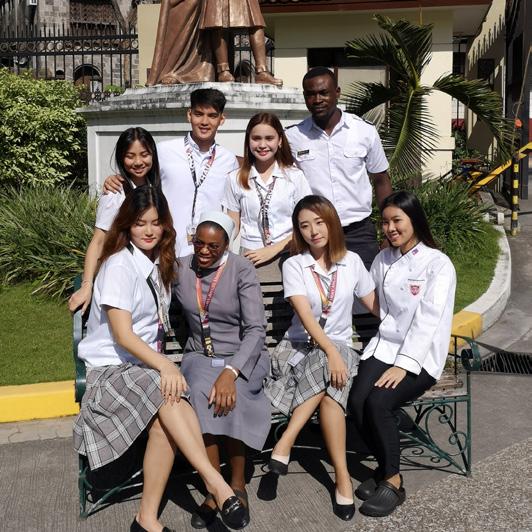

The University’s Bachelor of Science in Aeronautical Engineering (BSAE) program has remained its most popular program since it started in 2011. It is one of several programs that prepare students for aviation and the airline industry careers. This school year, about 1,500 students are in the BSAE program.
The BSAE program received Level 1 accreditation from the Philippine Association of Colleges and Universities Commission on Accreditation (PACUCOA) in August 2019. From 2015 to 2017, all BSAE graduates passed the professional regulatory examinations for Aeronautical Engineers.
The BSAE program at HAU has appropriate laboratory facilities on one of the country’s most beautiful campuses. These Aero labs have five different set-ups: 1) AE
The BSAE faculty are experienced industry practitioners and highly qualified educators at the same time.

Workshop Laboratory for Aircraft Materials, Construction and Repair, Aircraft Production, Maintenance, Planning and Control, and Powerplant Engineering Courses; 2) AE Wind Tunnel Laboratory Flow Simulation, such as Fluid Dynamics and Aerodynamics, and for testing Aircraft Structure Designs; 3) Chemistry Laboratory for Engineering Chemistry; 4) Physics Laboratory for Fundamental Physics; and 5) Computer Laboratories for Computer Aided Design and simulations.
Over 17,000 students from around the Philippines call HAU their university, making it the largest private institution in Central Luzon. There are over 100 international students
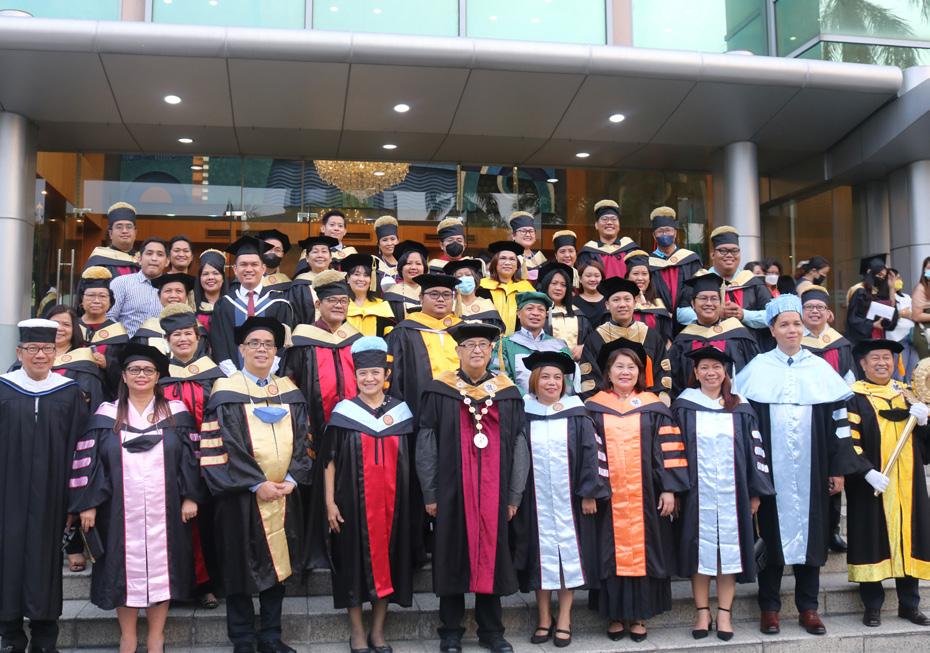
from Korea, Nigeria, the USA, China, the UK, Denmark, Ghana, and Nepal, including dual citizens.
HAU’s BSAE program has very qualified, highly technical faculty members with engineering and functional specializations. They provide quality instruction through innovative teachinglearning techniques and use one of the country’s most prepared learning management modalities.
Synchronous student and instructor sessions focus on socialization, looking for engineering solutions to real-life problems, and working on limited available data. Moreover, the faculty members encourage all engineering students to contribute to society by applying innovation,
critical thinking, and analytical and problemsolving skills to the country’s priority issues.
Students appreciate faculty and staff for their warmth, compassion, and competencies.
As a result, the program’s alums greatly respect the faculty and alma mater years into their successful careers in engineering and related fields.
HAU has built long-term relationships with global institutions and individuals to incorporate
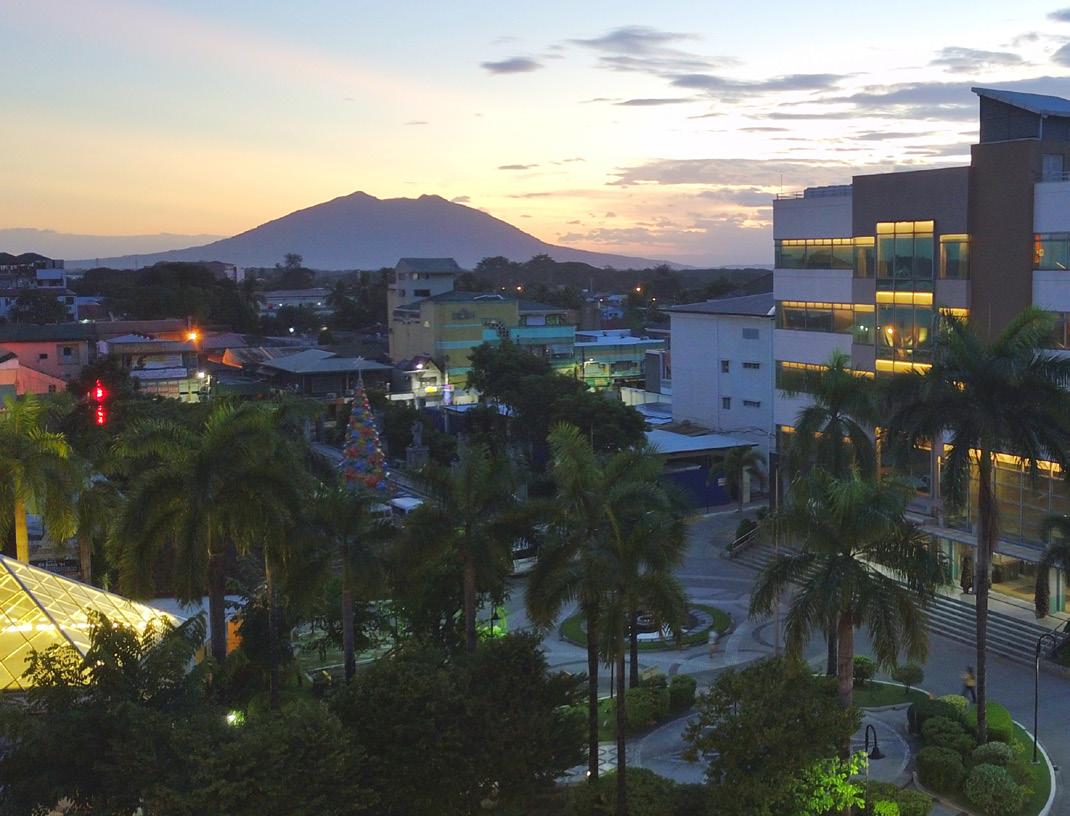
international curriculum development, intercultural recognition, teaching and learning alliance, and research collaboration.
HAU has partnered with aeronautical and aviation companies in and around Clark International Airport’s special economic zone. These collaborations include testing, internships, pilot education, and aircraft maintenance pathways. HAU also receives government research grants for projects such as solid rocket fuel, renewable energy, and Unmanned Aerial Vehicles (UAVs). Moreover,
The AE laboratories adequately support the study of aircraft materials, powerplant engineering, fluid dynamics, and avionics, among others.
the University has collaborated with partners in Europe and USA to offer related postgraduate certificates or degrees. Despite the pandemic, the University worked with international institutions through Collaborative Online International Learning (COIL).
Looking ahead, HAU has planned more partnerships to exchange students, faculty and staff, collaborate on applied research projects and publications, and participate in and co-sponsor programs, projects, workshops, seminars, academic meetings, study tours, and cultural exchange, and internships.
There are over 50 student organizations that run numerous events annually to engage students. Most events are competitions like quizzes, creative projects, and team works. For example, School of Computing students run hackathons and ‘capture the flag’ programming competitions. Engineering students create prototypes for design challenges, which have resulted in a few patented devices.
Similarly, students and outside collaborators are allowed to pitch engineering and entrepreneurial ideas to HAU’s Technology Business Incubator (TBI). HAU has further expanded its Knowledge, Innovation, and Technology Transfer Office (KITTO), which collaborates with partners and Schools (Faculties) to produce innovative and potentially helpful capstone projects.
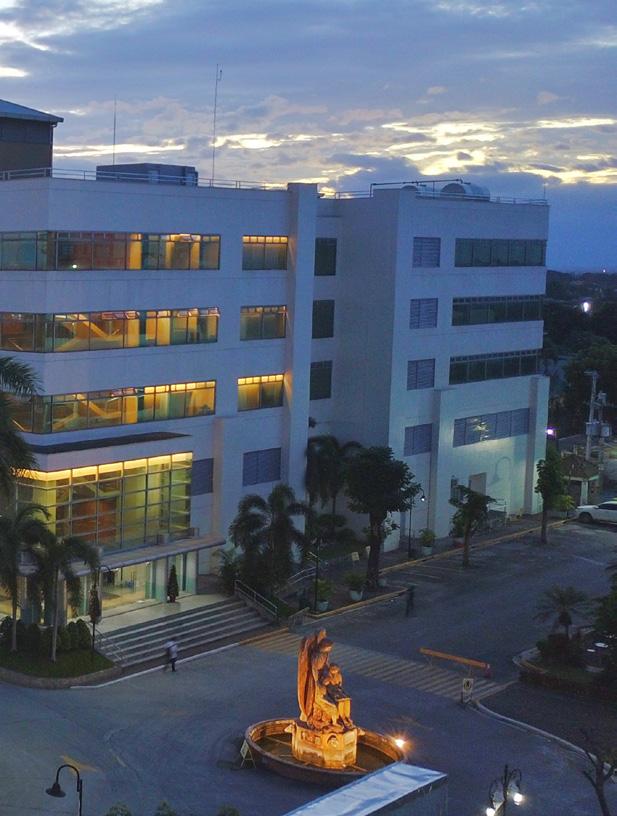
Societal responsibility is one of HAU’s values and advocacies. It shares the responsibility for environmental preservation, socio-economic and lifelong skills for the marginalized, social and educational advocacies, and support for vulnerable students through scholarships. The University also collaborates with networks and linkages that help contribute to societal well-being.
HAU offers about 42% of incoming students some subsidy or scholarship. The University has scholarships for three groups of students: (a) academically exemplary students, (b) talented students, and (c) financially-challenged students. Moreover, it has a long tradition, dating back to its founding in 1933, of providing financial assistance to deserving working students - a 100% tuition grant and allowances to serve four hours daily in any of the University’s offices. HAU provides expanded grants to

first-year college students through tuition discounts, uniforms, meals, transportation, book allowances, dormitory space, internet, and device subsidy.
HAU has an impressive record of getting up to 75% of the students recruited within six months after graduation. Students from previous cohorts have found work in diverse industries such as business process outsourcing, IT solution development, manufacturing, engineering, and logistics services.
Some students of the BSAE program who completed their internship at Singapore International Airlines Engineering and Alpha Aviation Group joined those companies permanently.
The seven-hectare campus of HAU is a great venue to live, work and learn. HAU is in the heart of the commercial and business district of Angeles City, 80 kilometres (50 miles) north of Metro Manila. Students around the globe have taken advantage of this compact city’s quality of life, affordability, and tourism.
The University’s Office of the Student Affairs delivers excellent student services and fosters a meaningful and memorable campus life for every Angelite. It provides a series of seminars, workshops, and training that help student leaders prepare for their leadership responsibilities and enhance their communication skills. Student leaders, in turn, provide many opportunities for engaging fellow students in an active study-life environment.
Furthermore, multiple student organizations design co-and extra-curricular activities, projects, competitions, student festivals, and other activities that appeal to all students and provide them with opportunities to showcase their talent and skills.
HAU is an institutional leader that continually innovates its operations and instructions. During the pandemic, HAU became the first University to start online learning in Central Luzon and the first to reopen its doors for limited in-person laboratory instruction.
HAU established the Community of Practice for Teaching and Learning (COPTL), composed of members of the academic groups to share innovations in teaching and learning. In 2020, the COPTL helped build the unique college modality: HAU Online Learning. According to the makers of HAU’s Learning Management System, HAU was the only higher education institution in the Philippines to take advantage of consistent content delivery to multiple classes by building courses one term in advance. In their third year of blended learning operation, each School (Faculty) developed the campus reopening modality that matched the conditions and culture of their particular students.
Holy Angel University’s Aeronautical Engineering Program is a flagship program that provides various pathways into the Aviation industry starting at a price lower than the total cost of attendance at an American community college. The program will continually undergo modifications and new offshoot programs in response to the aviation industry’s needs.
Bob Spires, PhD., Associate Professor, School of Professional and Continuing Studies, University of Richmond
Dr. Bob Spires is Associate Professor of Graduate Education at the University of Richmond’s School of Professional and Continuing Studies. His research includes a focus on international grassroots NGOs using education to address social issues. Dr. Spires’ has led international student trips to Southeast Asia, mentored students in international field research and conducted field work in Cambodia, Thailand, Hong Kong, India and Uganda.
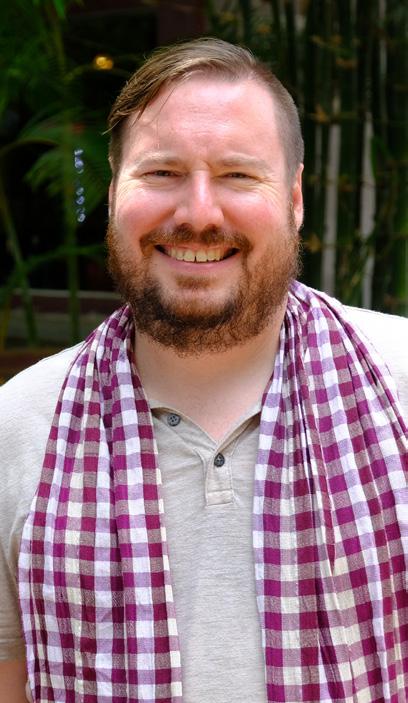
The benefits of travel and study abroad in higher education have long been lauded. The actual academic benefits, though are often, presented as generic catch-phrases like ‘see the world’ or ‘gain an appreciation for another culture’. Disconnections also remain between what is presented on a study abroad brochure, and the actual experience of students during their study abroad experience. The COVID-19 Pandemic gave us examples of college students the world over spending their semesters trapped in their dormitories, taking classes from their international professors and with their classmates online. Students were unable to explore the cities and countries in which they were located. The COVID-19 Pandemic gave pause to universities who wished to ensure quality travel experiences for university students and maximize the learning benefits of these experiences. The situation begged the question, “what are some of
the more powerful learning benefits of travel for university students?”
In the broadest sense, life-long benefits of navigating another culture and setting, even within one’s own country cannot be denied. However, international travel is a privilege to which not every university student has access. Knowing these broad benefits, universities are beginning to take more innovative approaches to provide students whose life circumstances create barriers to international travel with flexible and affordable options to travel abroad during their studies.
At my institution, the University of Richmond, Encompass Program targets student athletes, minority students, first generation university students and other demographics underrepresented in study abroad programs. Encompass pairs a spring semester course on campus with a shortterm trip in the summer semester. The travel cost is provided by the university and gives students
In the broadest sense, life-long benefits of navigating another culture and setting, even within one’s own country cannot be denied. However, international travel is a privilege to which not every university student has access
who may be limited by income or time limitations to experience international travel explicitly connected to academic content and objectives.
Explicitly connecting academic content and objectives to international travel is key to making sure students can contextualize their travel experiences in a scholarly manner. While tourist travel serves a purpose, international travel as a university student should be about more than just sightseeing and taking courses at another university. Tourism oriented travel emphasizes a consumer-based purpose of the travel, focusing on trying new foods, shopping for goods and experiencing the services known in the particular locale. Travel for academic purposes should have a distinctly different approach emphasizing engagement rather than consumerism, and this distinction is sometimes missing from academically-focused university student international travel. Having student groups led by tour guides and sequestered on tour busses for an entire travel experience is likely to miss key opportunities to add nuance to students’ perspectives and possibly even reinforce stereotypes and assumptions about the very places in which they are traveling.
One should not assume that traveling to a new place automatically gives students a broadened perspective, more empathy towards their hosts, or a clearer understanding of the complexity of a context. These goals must be proactively curated for students and explicitly supported by facilitators and travel planners. We ought not assume a tourist who has been to Times Square understands social life in New York, or to the Great Wall understands social life of rural Chinese. Likewise, we ought not assume that students can apply their academic learning in the humanities or social sciences at the university level to their semester abroad in Rome, Paris or London.
What needs to be put in place in order to increase the relevance and impact of international travel on
Travel for academic purposes should have a distinctly different approach emphasizing engagement rather than consumerism, and this distinction is sometimes missing from academically-focused university student international travel
university students? The answer has three parts: before the travel, during the travel, and after the travel.
Before travel, explicit connections need to be made between the issues students explore in their courses and programs and the issues facing the communities to which they will travel. Certainly, some students take it upon themselves to explore their new contexts, meet local people and organizations, and engage more fully in their setting. However, many do not realize the profundity of their travel experiences for years to come, and may lament missed opportunities to authentically engage in those settings after the fact. Therefore, effective travel opportunities for college students should be front loaded with explicit background information on these settings, including cultural norms and history, as well as concrete preparatory work making explicit connections between those locales and the academic coursework the student has already done or is doing. Rather than expecting students to learn everything about the upcoming travel setting, tailoring topics to student interests makes for more engaging and meaningful preparatory work leading up to international travel. While some academic focus areas are ready-suited to particular travel destinations (for example architecture in Athens, Greece or visual arts in Paris), higher education institutions should proactively explore more diverse academic connections outside the common fields associated with travel abroad for university students.
During the international travel experience, experiences for students should prioritize engagement with an emphasis on relational connections rather than transactional connections to local actors. Students cannot always be expected
to establish their own life-long connections on these travel experiences, and universities are well-suited to design and facilitate authentic experiences with local actors and organizations. Committing to providing students with relational experiences that facilitate authentic collaboration and communication with individuals and local organizations requires significant work on the part of the institution, but the likely impact on students is well worth the effort.
Finally, after the international travel experience, students need opportunities to share their experiences with their home institution, both with faculty, staff and other students. These opportunities can be informal, such as a social event where students discuss their travel abroad experiences. Opportunities can also be formal, such as formal presentations, panels or symposia. The key to making these opportunities impactful is for students to understand that something is at stake in their travel. When students understand the importance of being both a recipient and contributor of knowledge, the purposes of authentic connections become clearer. Further, institutions that communicate the potential positive impact that students can have on the world while being a student see positive outcomes from student international travel in short-term and long-term ways.
As we collectively emerge from the COVID-19 pandemic and return to our prepandemic travel, I encourage universities worldwide to embrace more relational, embedded and authentic international travel opportunities for their students, with expressed efforts put toward before, during and after travel programming that brings these travel experiences to life in the lives and studies of students.
Franck Milet is the CEO and Founder of Secondworld.ch, running 4 VR centres in Romandie, and VR4Business, a company focusedonbringingthepowerofVRtothebusinessworld.Heisaserial entrepreneur, previously leading various start-ups in the automotive and luxury goods industry. A telecom engineer by training Franck headed teams in theareasofconsumerexperience,networks,governanceandprojectmanagement in multinationals such as France Telecom, Nokia, Orange Suisse/Salt and Sommet Education.HeholdsengineeringdegreesfromtheInstitutNationaldesTelecommunicationsin Paris. After trying Virtual Reality, Franck saw an opportunity in the Swiss market and immediately broughttogetherVirtualRealityandhispassionforgamingtocreateSecondworld.Hisvisionwas tobringVRclosertosocietyandexploreitspotential.Hismotto:Techtothepeople!isareminderof hisfocus:makeVRanexperiencepleasant,usefulandaccessibletoall.
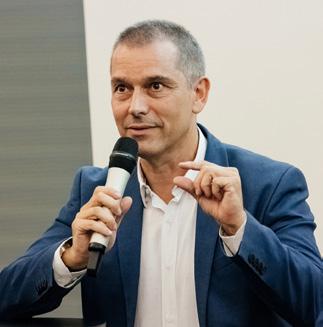
Virtual Reality can be defined as a technology that has the power to transport the user to a place where he actually is not.
Initially based on computers with a simple screen and sometimes a device transmitting haptic feedback (i.e. able to reproduce vibrations or simulate resistance to movement), it is now relying on much more immersive technologies, the most prominent these days being Head-Mounted Displays (HMDs).
Experiences already exist for a few years that can immerse the user in the human body and understand how it works “from the inside”, or learn languages in a fun and efficient way, or visualise molecules and play with them in order to understand why atoms are assembled in a certain way. Virtual Reality provides here multiple benefits:
1. It is more efficient than traditional classroom methods when it comes to the persistence of the learned skill and the ability to use it in a real environment
2. It is more fun, engaging
3. It appears more attractive and innovative to the target audience, be it pupils of a primary school or GenZ. Also, these younger generations are more likely than their older fellows to own or use a VR HMD at home. A study published by ARtillery intelligence shows a 45% usage rate by Gen-Z versus 6 for boomers.
4. It does not allow for gender or race bias, as for instance, the actors in a VR-based roleplay simulation won’t change their attitude based on who the learner appears to be.
The first point has actually been researched and demonstrated by PWC, with the conclusion that learners were 4x more focused than e-learners, learned 4x quicker and show 2.75 x the confidence to use the learning in real life. In essence, VR allows for quicker learning, with more persistent effects, and greater efficiency in real life.
So you might ask… what are we waiting for? Every classroom should have a set of VR headsets and content!
Experiences already exist for a few years that can immerse the user in the human body and understand how it works “from the inside”, or learn languages in a fun and efficient way, or visualise molecules and play with them in order to understand why atoms are assembled in a certain way
Well, at least in Europe, it’s not yet the case.
For sure, there are already a few use cases in place. For instance in hospitality, where simulations can teach students how to manage customers, or test their skills in fixing a room according to standards, but currently, it’s more an exception than a rule.
A few elements can explain this:
– Academia is traditionally slow to evolve and open to new methods. How many “interactive whiteboards” are still used as decorations in classrooms?
● Virtual Reality has been ramping up quickly in the past few years but is still quite unknown by the general public, hence educational institutions and authorities. Figures gathered by VR4Business during conferences, workshops and seminars suggest that in Switzerland, only 11% of the public addressed had already used a VR headset more than once.
● There might be a little defiance of the tool, in some cases, as it could be perceived as a replacement for the teacher.
The price point is no longer an argument, as for instance, the PicoNeo3 headset sells for a price that is quite similar to an entry-level Ipad. And it’s even less of an argument in Switzerland where the level of life is quite high and schools sufficiently funded.
In their quest to bring Technology to the People, VR4business has been approaching various institutions and has drawn the following perspective as to how Virtual Reality could penetrate the education world.
Tech hasn’t been a problem for 5 to 6 years and is becoming easier to use every 18 months,
with a trend that is even accelerating. The issue is somewhere else: perception. For instance we frequently still get the “will I get dizzy?” question when new users are presented with a VR experience. The remedy here is to get people under the headset and let them see by themselves! Success is 99% guaranteed.
Educational content is a bit peculiar in the sense that it has to fit a course, which isn’t always the case with off-the-shelf content and has to be localized. Whereas there’s a lot of English language content, the same can not be said of Spanish, french or german for instance.
Even with a perfect product for a given population, it could well be that headsets would be left to gather dust in a cupboard if there isn’t a member of the Faculty with a strong interest to try out the technology.
We believe that the 3 elements combined, in the swiss context, and probably extending to Europe, are key to propagating the good news and spreading the benefits of Virtual Reality into the educational world. As we write, it looks like this trio has been successful in triggering one of our projects, and we will soon be able to announce a joint project between VR4Business and one of the swiss Haute Ecole.
(1) Human Anatomy, Meta Quest store
(2) PwC’s study into the effectiveness of VR for soft skills training
(3) ARtillery Intelligence, US VR Penetration, 2022

Vivek Bhandari, Founder and CEO, Scholarly

Vivek Bhandari is the Founder and CEO of the ed-tech companyScholarly.AnIITDelhiandIIMCalcuttaalumnus,Vivekis
passionate about higher education. A former banker and mortgage expert, he mentors students and professionals for admissions to the Ivy League and top universities globally. Over a two-decade career, Vivek has led large global organisations providing banking products, IT-enabled services, technology services, loan servicing, property management, and other real estate services.HehasextensiveexperienceofworkinginIndia,theUS,andEurope,andastrong understandingofthesemarkets.BasedinLuxembourg,VivekregularlytravelstoNorthAmerica and India for work.
It is surprising how many students approach potential recommenders a couple of weeks before the submission deadline with no background information. This is a mistake
The pandemic is finally in our rearview mirror. After two years of travel restrictions and social distancing, things are finally back to normal. Not unexpectedly, there is a spike in interest from students and parents in study abroad options, particularly in Englishspeaking countries.
As students put the finishing touches on their university applications for Fall’23, one crucial last-moment question is always about a reference letter or letter of recommendation (LoR). We see several queries by panicked students and parents asking, “Who should we approach for LoR?”, “What should it say about the student?” and “Why is the reference letter important”, etc. In this article, we will
provide some clarity about the LoR’s and answer some common questions.
What is an LoR and why is it important?
A letter of recommendation (or reference letter) is a crucial part of your application to a foreign university. This describes you from the perspective of the recommender. While your transcripts, grades and certificates are objective criteria which admissions officers use to evaluate your candidature, the LoR is the opinion of your teacher, coach or supervisor describing their observations. The LoR covers personality traits like curiosity, work ethic, class engagement, enthusiasm and focus that can’t be covered anywhere else in the application.
LoR is an important component of your application as it helps complete your picture in front of your dream university.
Your recommender needs to be someone you respect and who is related to your field of interest. If you are a high school student aspiring to study engineering, this may be your Physics (Chemistry or Computer Science) teacher. If you plan to study Economics, this may be your Economics or Math teacher. Based on your extracurricular activities, awards and internships, you have interacted with and
impressed other accomplished people who may be willing to write an LoR for you.
If you are already in college, your recommender may be a professor from your department or from a field that you want to pursue in graduate studies. If you are a working professional, this may be your immediate supervisor or your department head. Try to find a mentor who inspires you and you would like to emulate what they have done.
Keep in mind that several universities require two or more LoR and specify the type of recommenders (teacher, counsellor, coach, other). You should have an idea of what type of recommendations your top five university choices require.
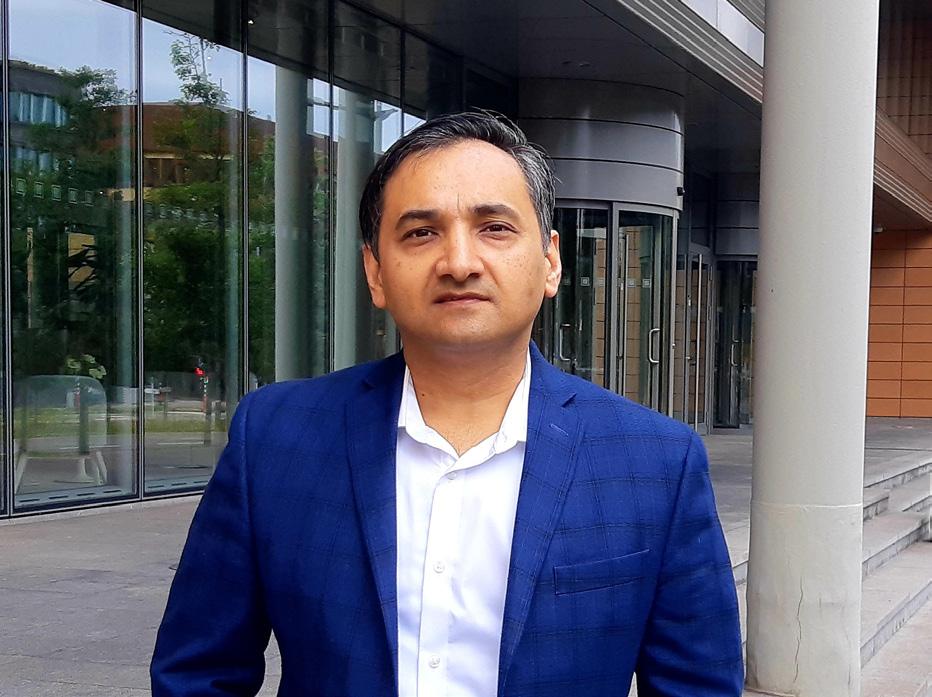
Approach a few potential recommenders several months before the actual LoR is required. It is helpful if your recommender is accomplished in their field and has interacted closely with you.
How should I interact with my recommender(s)?
After identifying suitable recommenders, you now need to find the right opportunities to work with them and demonstrate your skills and work ethic. For high school students this may mean (a) achieving strong scores in that subject, (b) working on projects and competitions, (c) class participation, and (d) volunteer work outside of the subject.
Similarly, college students need to outperform in the subject their recommender is teaching. Outperform means doing well beyond just the grades. It requires you to have a genuine interest in the subject and discuss recent advances as well as other applications in that field. Working professionals need to go the extra mile and generate customer delight. In addition to hard work and results, they also need to demonstrate their curiosity and willingness to learn.
Keep your recommender(s) appraised about your progress and seek feedback about other things you can do to develop holistically.
You need to demonstrate your performance and work ethic and gain your recommender(s) respect.
When should I request them to write the LoR and what should it say?
It is surprising how many students approach potential recommenders a couple of weeks
before the submission deadline with no background information. This is a mistake.
While your recommenders may want to support you in your admission journey, it is up to you to provide them with relevant information about your achievements and plans. Please keep in mind that teachers/ professors/supervisors are busy people and be respectful of their time. Additionally, they may receive similar requests from several others and may not remember details about each student.
You should request the actual LoR well before the actual submission timeline. You should also provide supporting information including your achievements and strengths as it pertains to that subject or recommender. They can then review what you have provided, add their observations, and provide a personalized recommendation letter. If you have already prepared a statement of purpose or a resume, it may cover the relevant points you want to be addressed. Provide your recommender(s) with relevant examples of your achievements and traits that you want to highlight.
Request the final letter of recommendation at least two months before the submission deadline. You may not know about their schedule and plans. Give your recommenders sufficient time to write a letter that explains their view of you as a student and a person.
The process for admission to Ivy Leagues or other top universities is long and requires extensive effort. While academic performance is an essential factor, well-written essays and detailed letters of recommendation go a long way in helping students get admitted to their dream universities.
Manuel Barreiro Castañeda, Founder & Chairman, Aston Group and Founder, Aston Barreiro-Ugalde Foundation
Manuel Barreiro Castañeda is the founder and chairman of the Aston Group, a private equity firm with 1 billion investments to date, that develops real estate projects as well as private equity placements with a focus on the North American and European continents. He is a strategic leader with over 20 years of experience in international real estate and a long history of success advising public and private sector stakeholders on the intersection between technology, sustainability, mobility, and smart cities. Manuel leverages his extensive experience and background to ensure that all real estate projects are aimed at benefitting the local community by improving the quality of life, reducing inequality gaps, and positively impacting the environment.
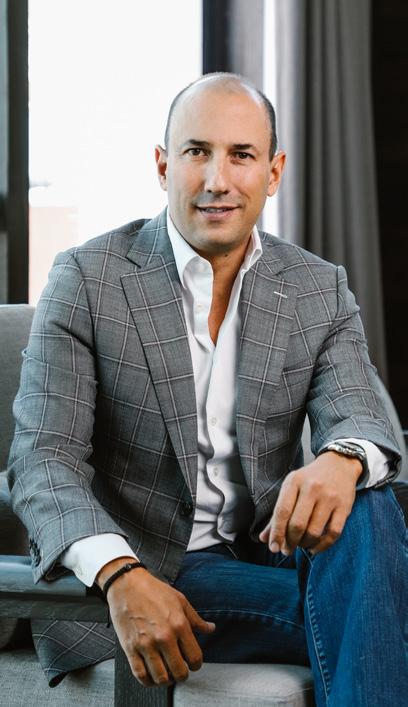
Given today’s environmental and mobility concerns, we aim to internally develop various urban sustainability projects aimed at helping youth and the elderly to integrate better into a social and urban context
Education should be a human right, but for many, it is a dream. These are some of the realities in many cities of Mexico, where children are struggling to complete their education due to lack of access, poverty, or other difficulties.
Therefore, as a philanthropist, I decided to take action and tackle this key issue by creating the Aston Barreiro-Ugalde Foundation. The mission of the Foundation is to spread awareness and the importance of providing accessible education to children in Mexico. The foundation is committed to improving the quality of life of Mexicans by conceptualizing and implementing powerful knowledge-based tools and systems.
Given today’s environmental and mobility concerns, we aim to internally develop various urban sustainability projects aimed at helping youth and the elderly to integrate better into a social and urban context. This is achieved by providing public spaces designed to decrease insecurity in the areas concerned and provide social and sports opportunities for the community to come together and develop further.
I believe that accessibility in education helps create better opportunities for the next generations. Therefore, we need to focus on supporting other key not-for-profits such as “Fondo para la Paz”; a non-profit development agency founded in
The financial aid from the foundation is aimed at supporting children’s access to education in some rural regions of Mexico, such as Oaxaca, Campeche, and San Luis Potosi
1994 that promotes the well-being of rural communities, primarily indigenous, that live in extreme poverty through collaborative, inclusive, and sustainable projects. The financial aid from the foundation is aimed at supporting children’s access to education in some rural regions of Mexico, such as Oaxaca, Campeche, and San Luis Potosi. This would be achieved by constructing schools and educational facilities to give children in the area access to education.
To further reduce the educational inequalities in these locations, the Aston Barreiro Ugalde Foundation is committed to removing the barriers to learning by sponsoring the professional training of
teachers to improve their academic level even further, help them design the correct strategies, and aid in the development of suitable teaching styles to meet the needs of their learners. Moreover, through a system of scholarships, the foundation offers direct support and assistance to low-income, exceptionally talented children who aim to complete a higher degree.
Have you ever thought about how many children’s talents are being undermined and failing due to inadequate resources or the inaccessibility of the necessary means?
We cannot do this alone, so partnerships and engagement regionally and globally are at the heart of our work! We invite potential partners to join us in this noble mission.
